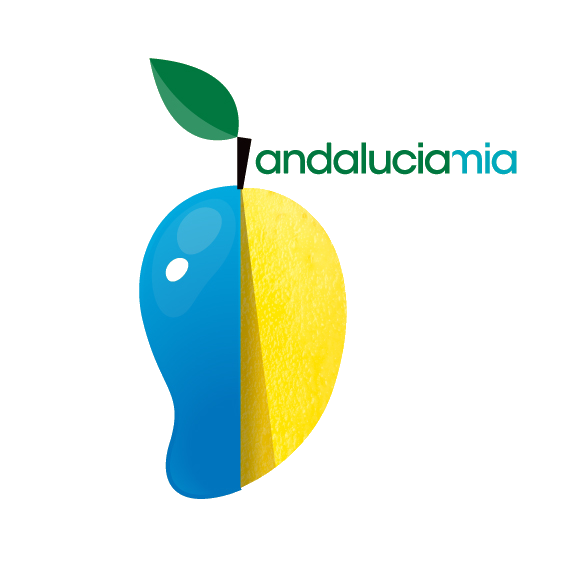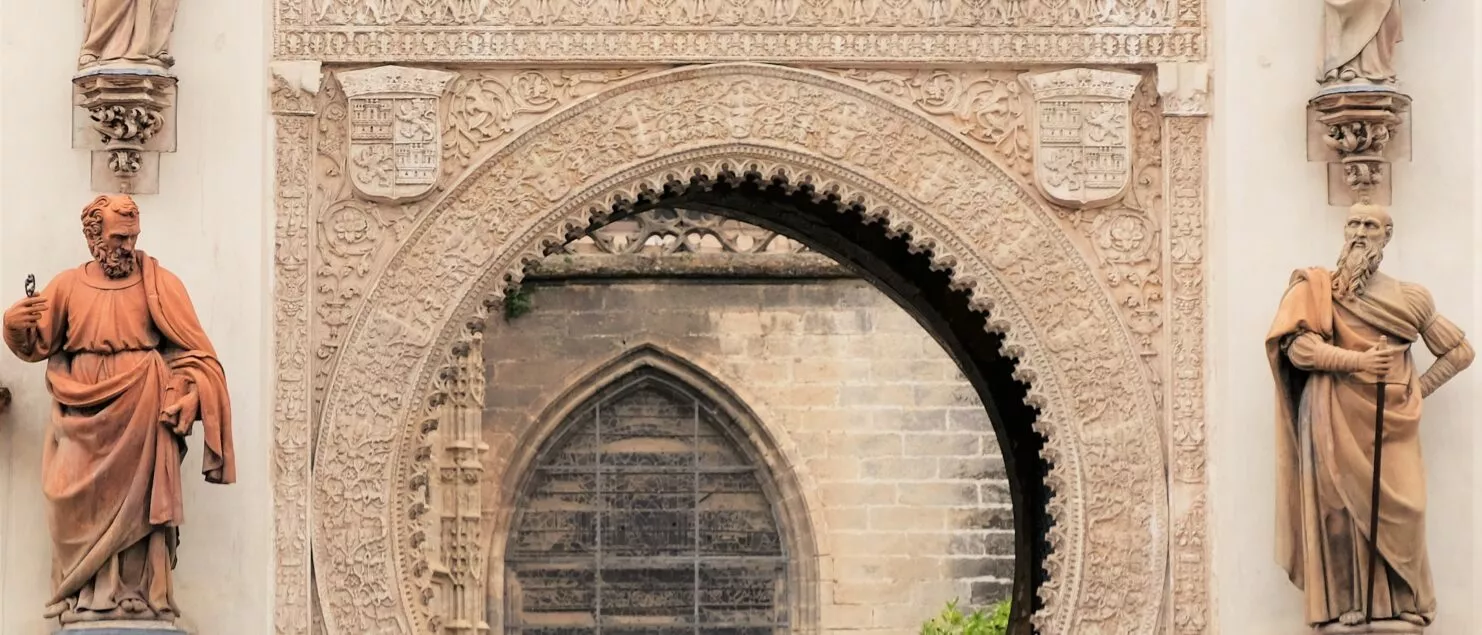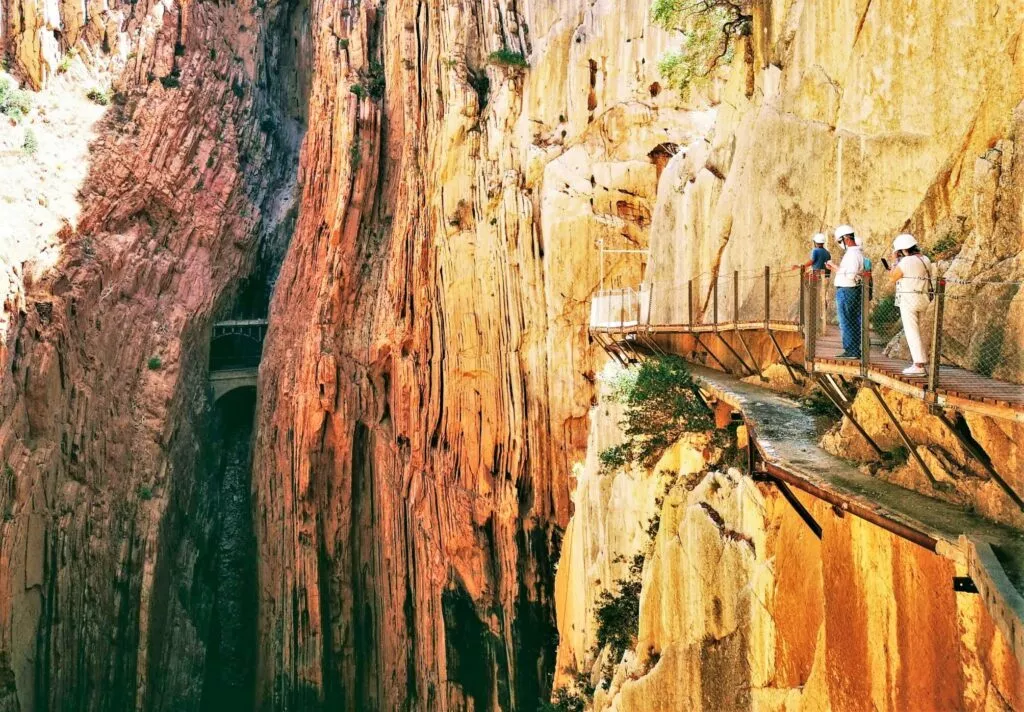Unusual Seville – 24 places and curiosities to know and experience
Here’s an unusual and secret Seville to discover in a variety of places.
On this page you’ll find the best of the secret and unusual Seville, :
- monuments off the beaten track,
- unusual places to stop for a bite to eat and a drink,
- unusual hotels to stay in
- and some curious information about Seville
What to see and know in the unusual Seville
- The Isabel II Bridge (Triana Bridge)
- The last Carbonería
- Dinner in old Arab baths
- Church of Santa María la Blanca
- Calle Reinoso (or Calle del Beso)
- Bar Bodega Santa Cruz
- No8Do
- Balcón de Rosina
- The Caracoles in May
- Seville, city of opera
- Bar Garlochí
- The University of Seville
- Bar Patio San Eloy
- Asegurada de incendios ceramics
- Nights in the Alcazar gardens
- The 12th-century city wall
- The Archives of the Indies
- Religious crafts
- The curious wheel-shaped stones
- A bar to discover orange wine
- 3 Roman marble columns
- The Inquisition Alley
- The world’s smallest theatre
- Drinks on the highest rooftop in Andalucia
The Isabel II Bridge (Triana Bridge)
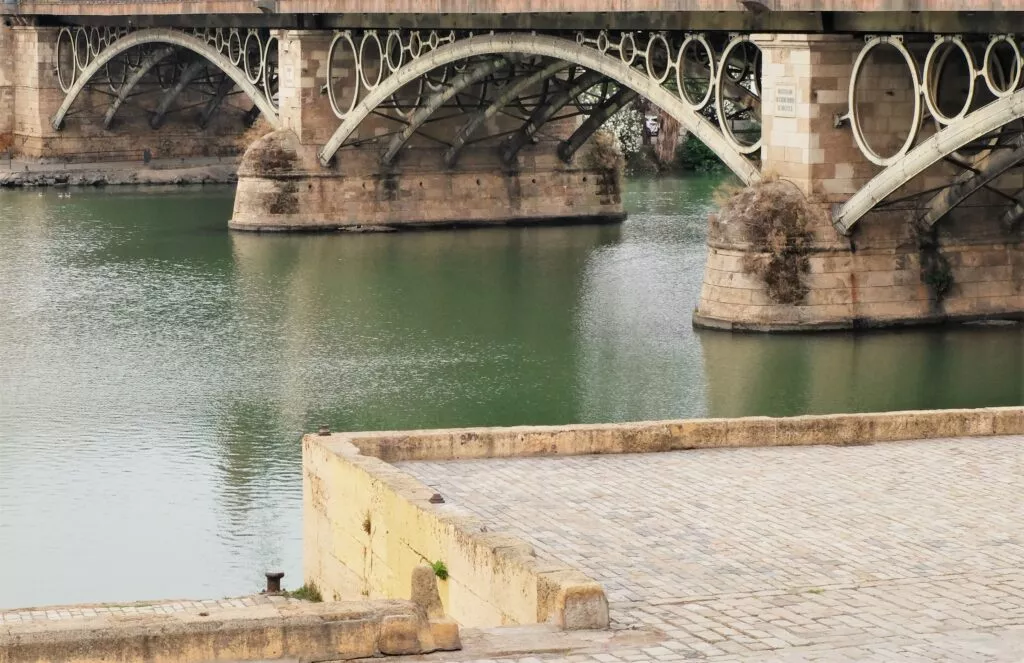
This bridge of Triana is a curiosity in itself: it is a copy of a bridge in Paris, located next to Notre-Dame. Although the “copy” is still present in Seville, the Parisian bridge, the Pont du Carrousel, has now disappeared, having been destroyed in 1931.
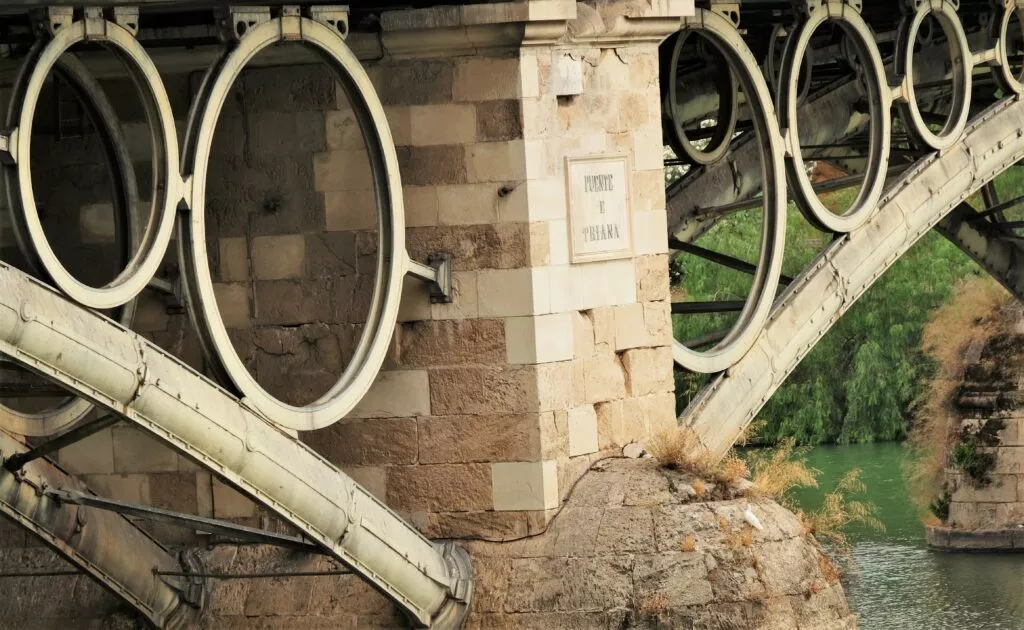
The bridge commonly known as the Triana Bridge is also a place where young and old seal their love.
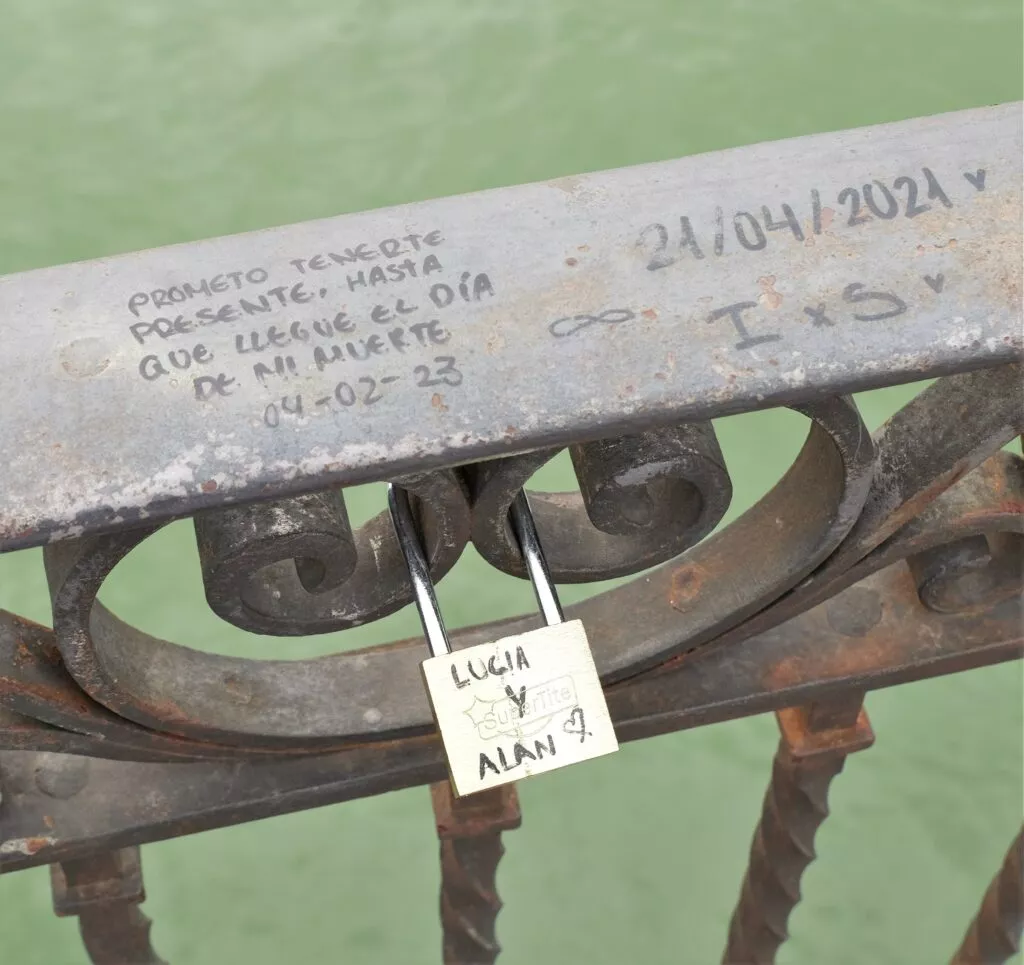
We cross this bridge leaving the historic center of Seville to reach the magnificent and popular district of Seville, the barrio of Triana.
This is the bridge used by everyone who came to visit Seville on foot, in 3 days or more.
The last Carbonería
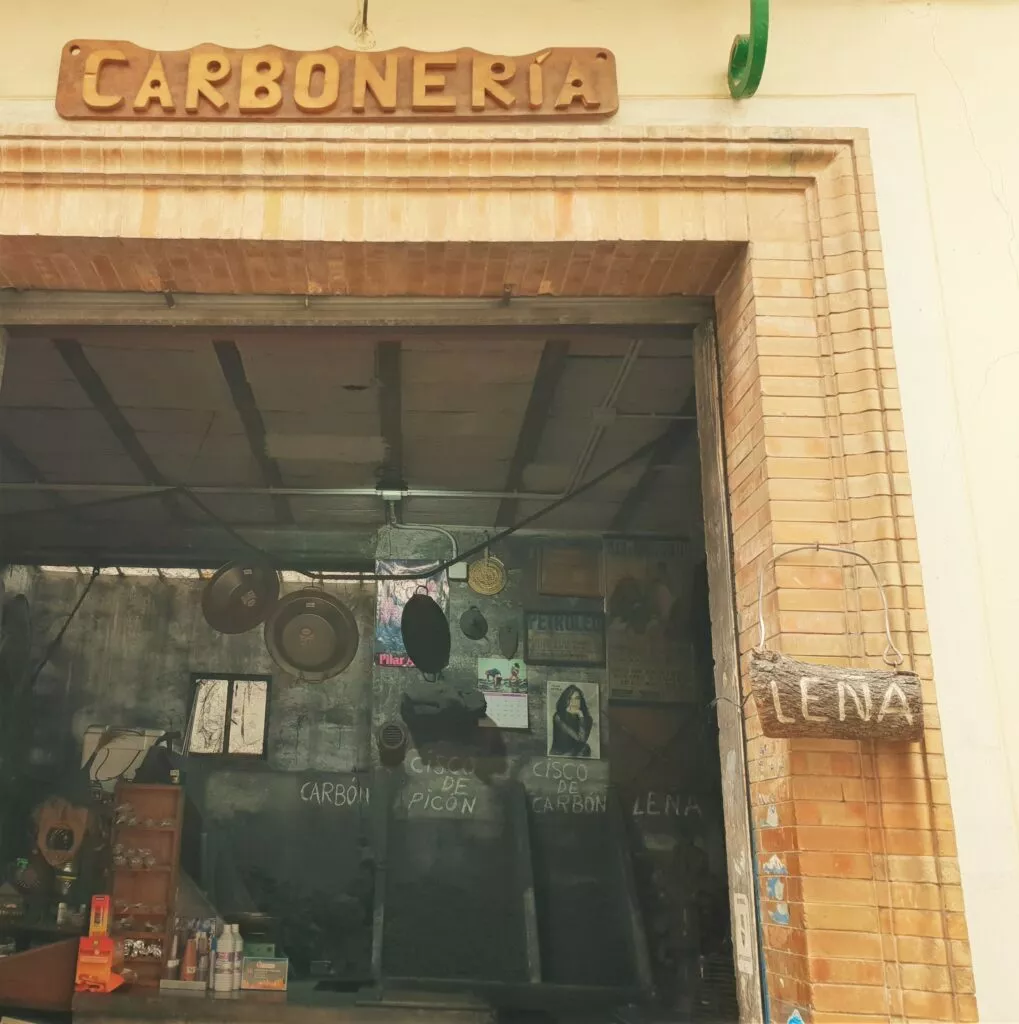
Here’s a shop that’s absolutely unique in Seville….because it’s the last of its kind. It’s the last carbonería in Seville.
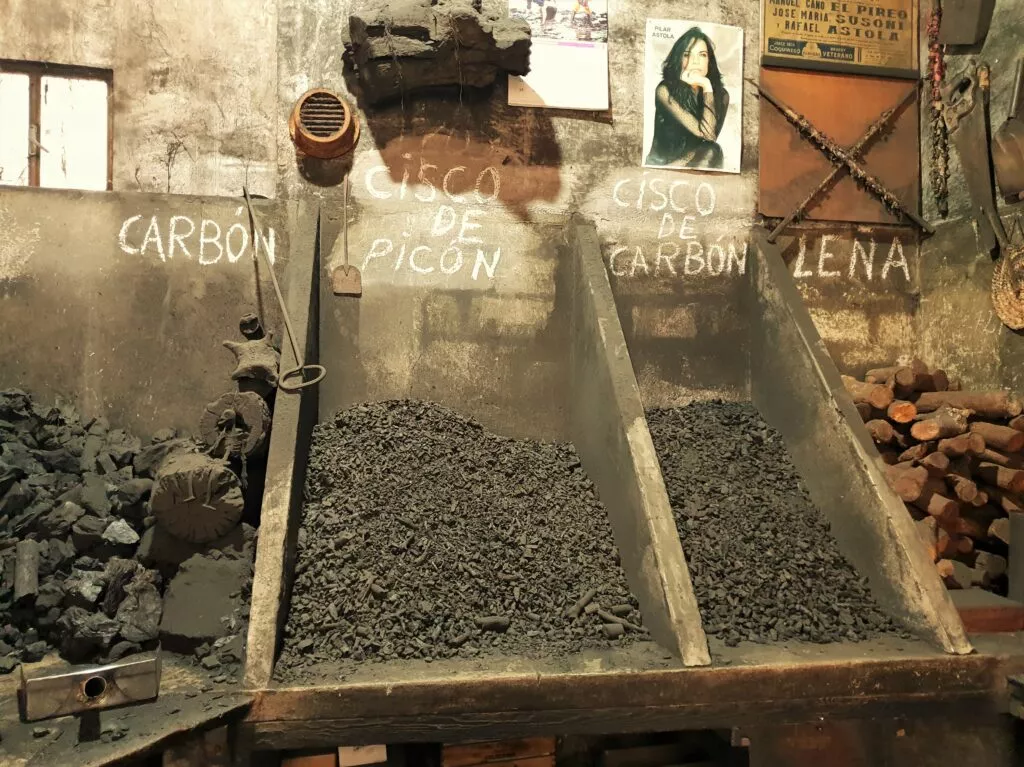
You can find all kinds of charcoal here, depending on your needs (heating, barbecues, and in a few rare cases to heat the brazier of a “mesa camilla”, here is an example below (photo taken in the magnificent white village of Medina Sidonia):
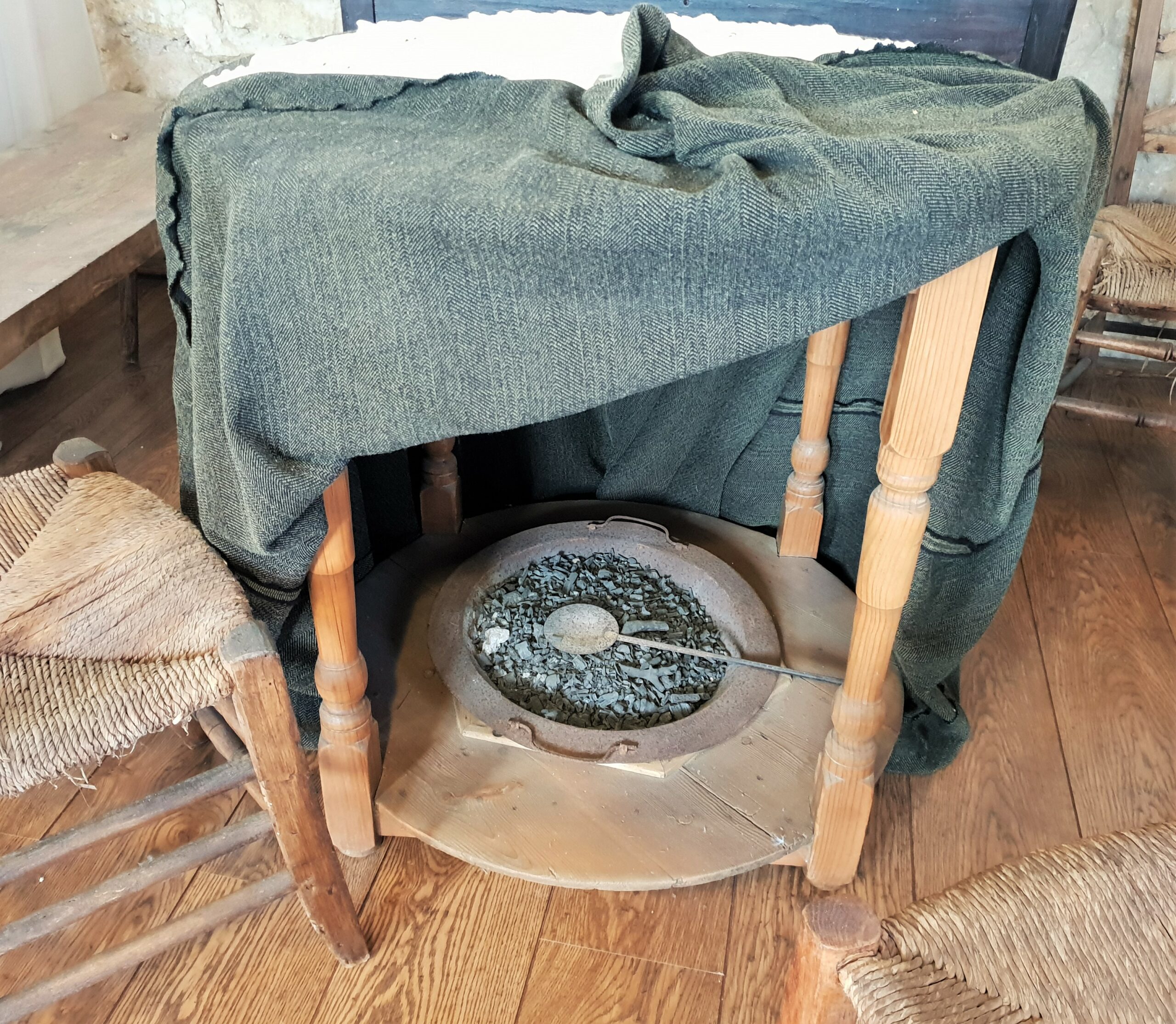
An idea for a restaurant in an unusual location for one evening
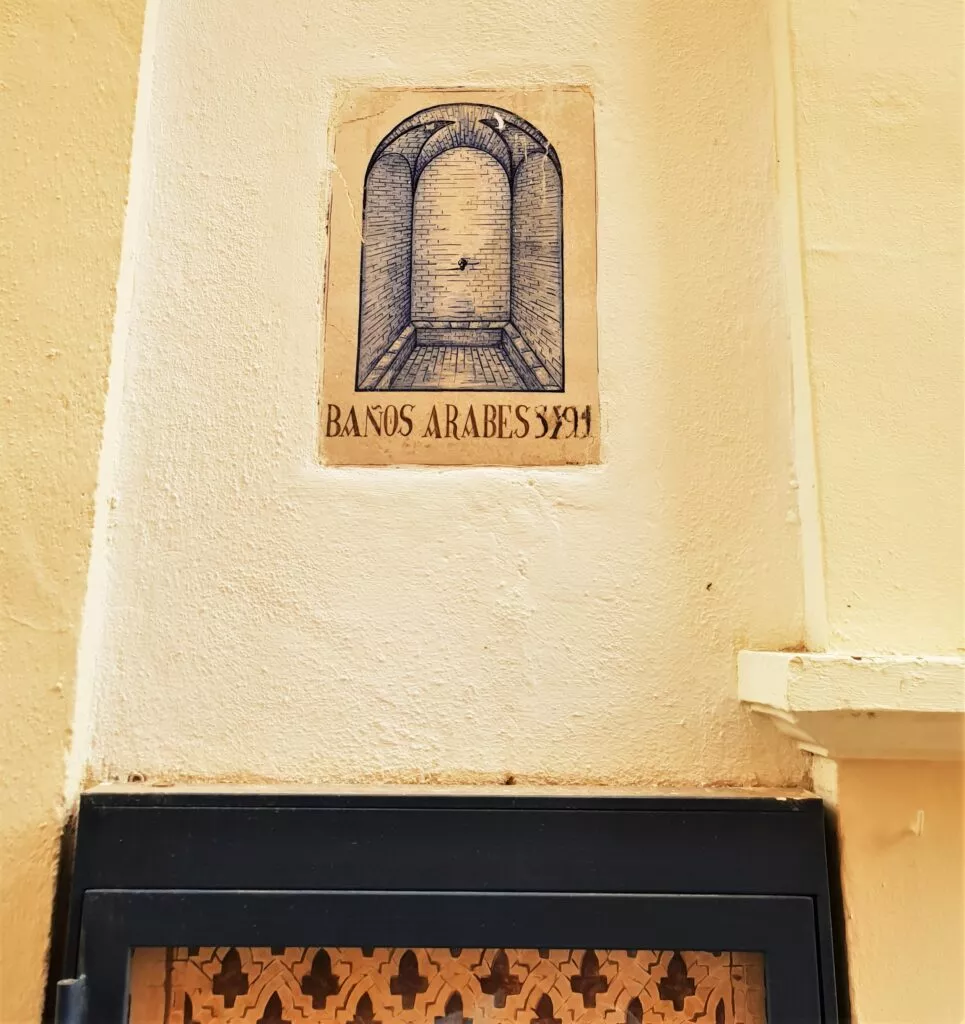
Here’s a great place to dine in an unusual setting, a former Arab baths.
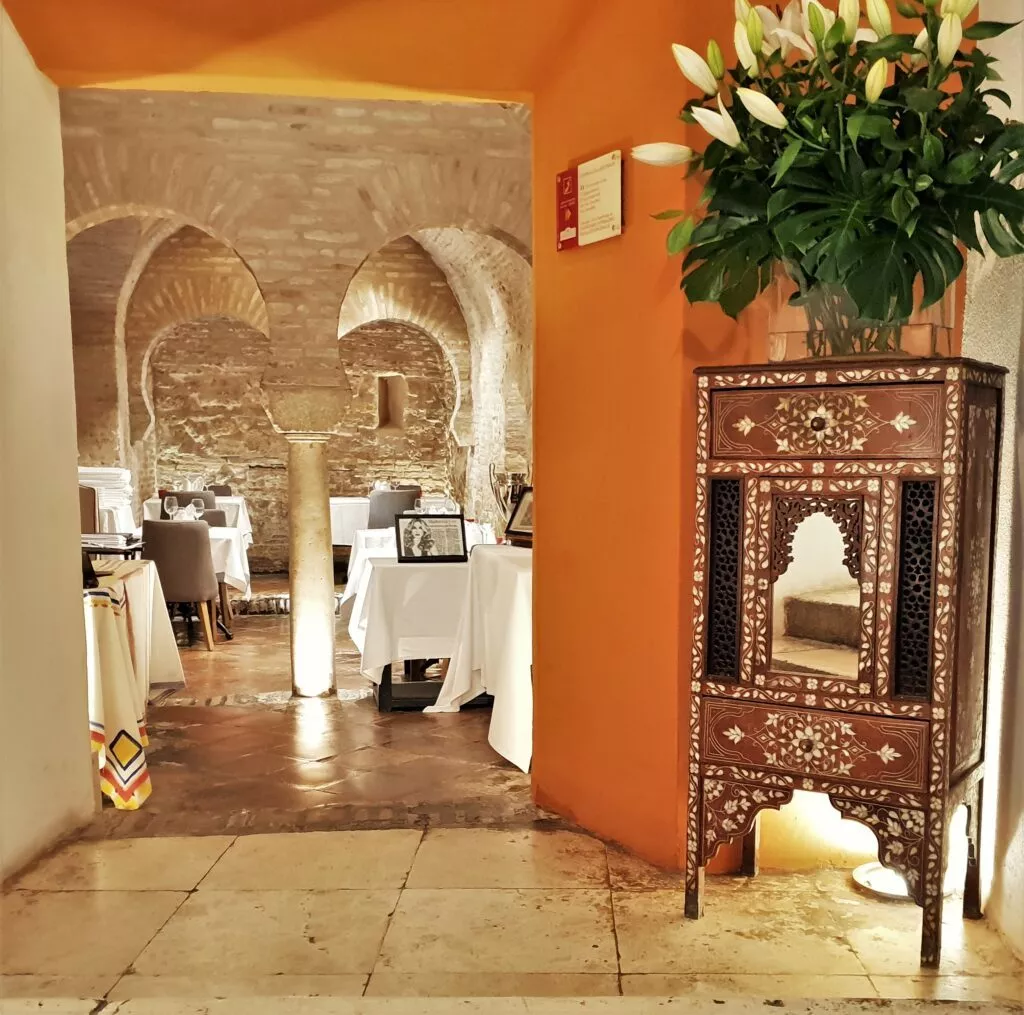
Here’s the address and map to find the San Marcos restaurant.
Church of Santa María la Blanca one of the best unusual place in Seville
This is a must-see monument. This small church is often overlooked on city tours, yet ….
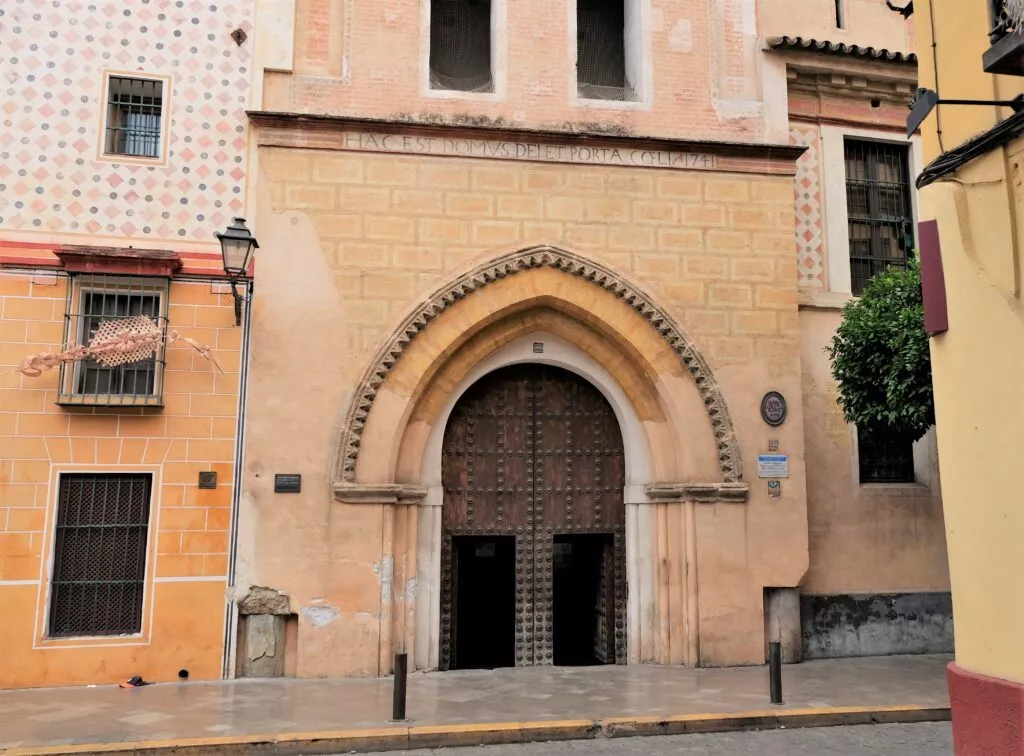
Despite its discreet façade, this religious temple is steeped in history. It was once a synagogue, then a mosque and now a church!
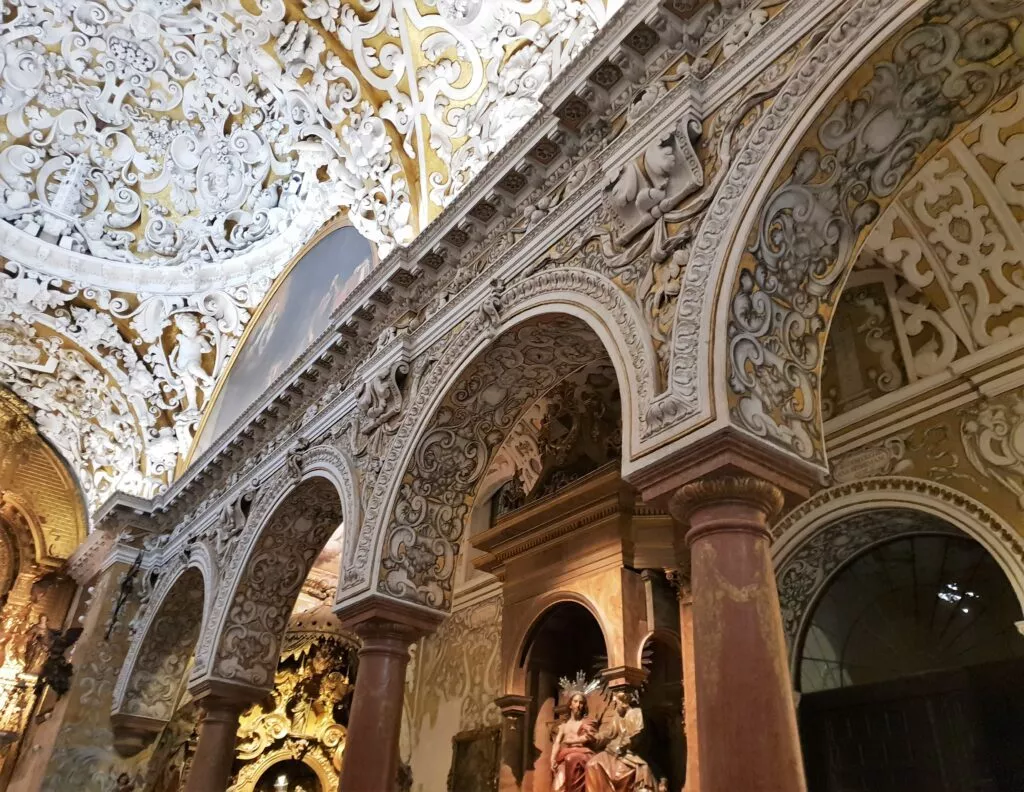
The interior is of infinite beauty, and you can see from the ceiling that this church is aptly named Santa María la Blanca.
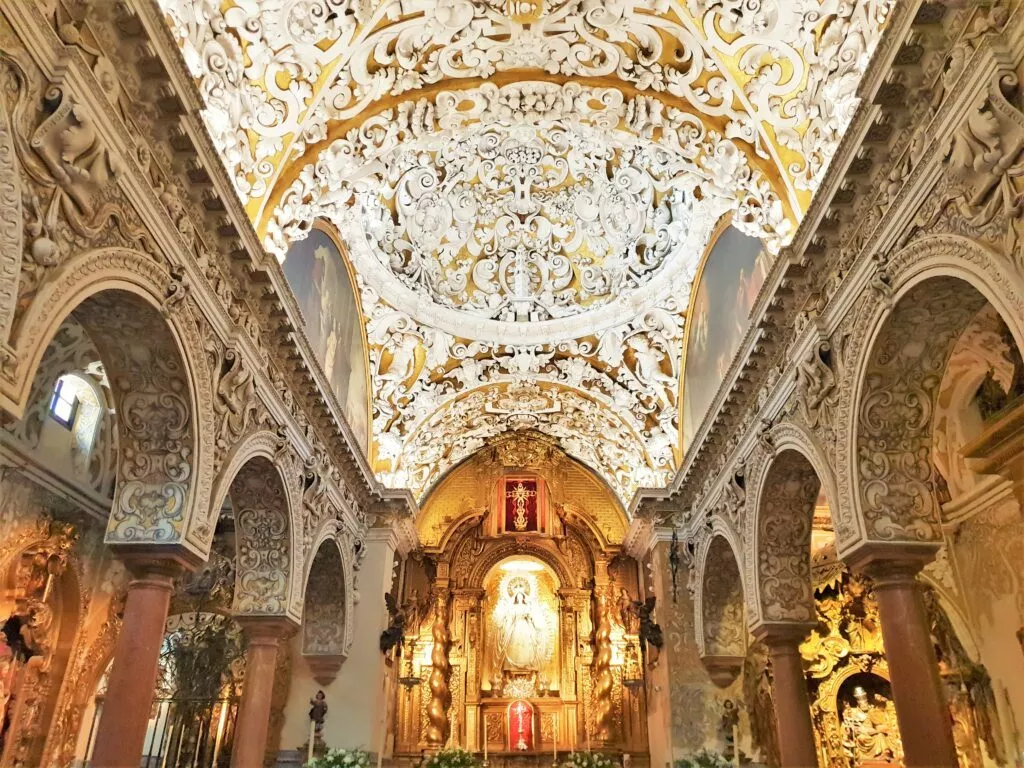
This church is located in the heart of the fabulous and historic Santa Cruz district of Seville. The old Jewish quarter, the judería, is largely located in this district and the other part is in the San Bartolomé district.
Reinoso street ( ou calle del Beso) a great unknown place
Although officially known as Calle Reinoso, this street is still popularly known as Calle del Beso.
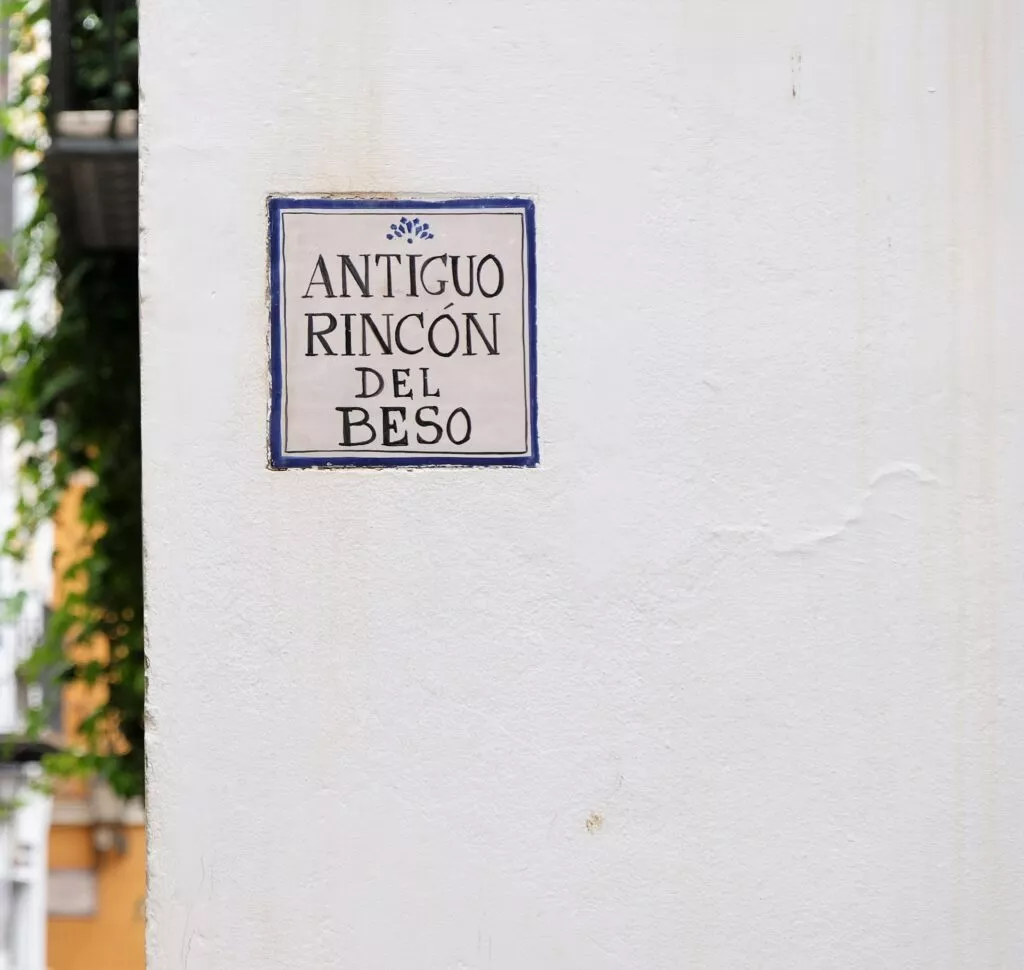
The origins of this curious name lie in the following story: calle Reinoso, in the Santa Cruz district, is the narrowest street in Seville. It is said that on this street, you can kiss your neighbour on the balcony opposite you….
A restaurant for lunch, Bar Bodega Santa Cruz
This is a small tapas restaurant just 2 minutes from the Giralda. The menu includes “comida casera” and the food is good, with the added bonus of an old-fashioned bill written in chalk on the counter!
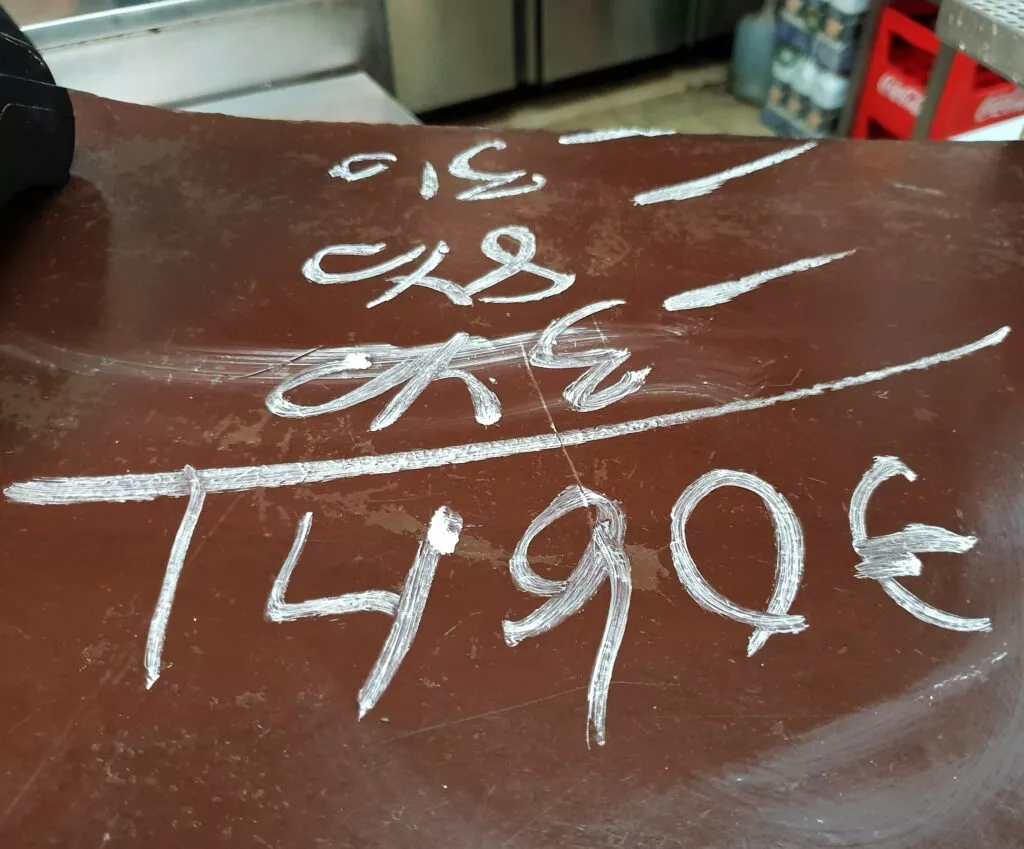
I tried to do the same when I got back to the hotel, on a piece of paper… it takes practice though.
Here’s the address and map to find the Bar-Bodega Santa Cruz.
No8Do: something unknown you see everywhere in Seville
This No8Do ‘logo’ can be seen on every street in Seville, on the ground, on facades and on signs.
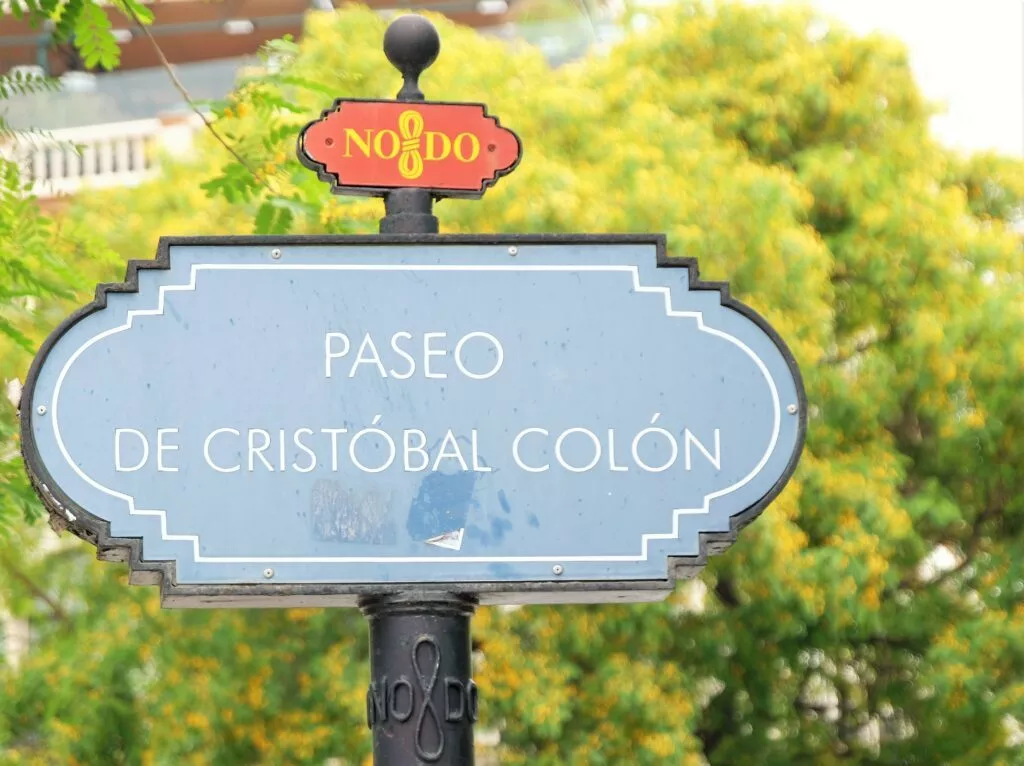
It’s not actually a logo, but the motto of the city of Seville, written in the form of a rebus. What looks like the number “8” represents a ball of wool, or more precisely a skein of wool.
Its Spanish translation is “madeja”, which means “no madeja do”, or “no me han dejado” (“they haven’t left me”).
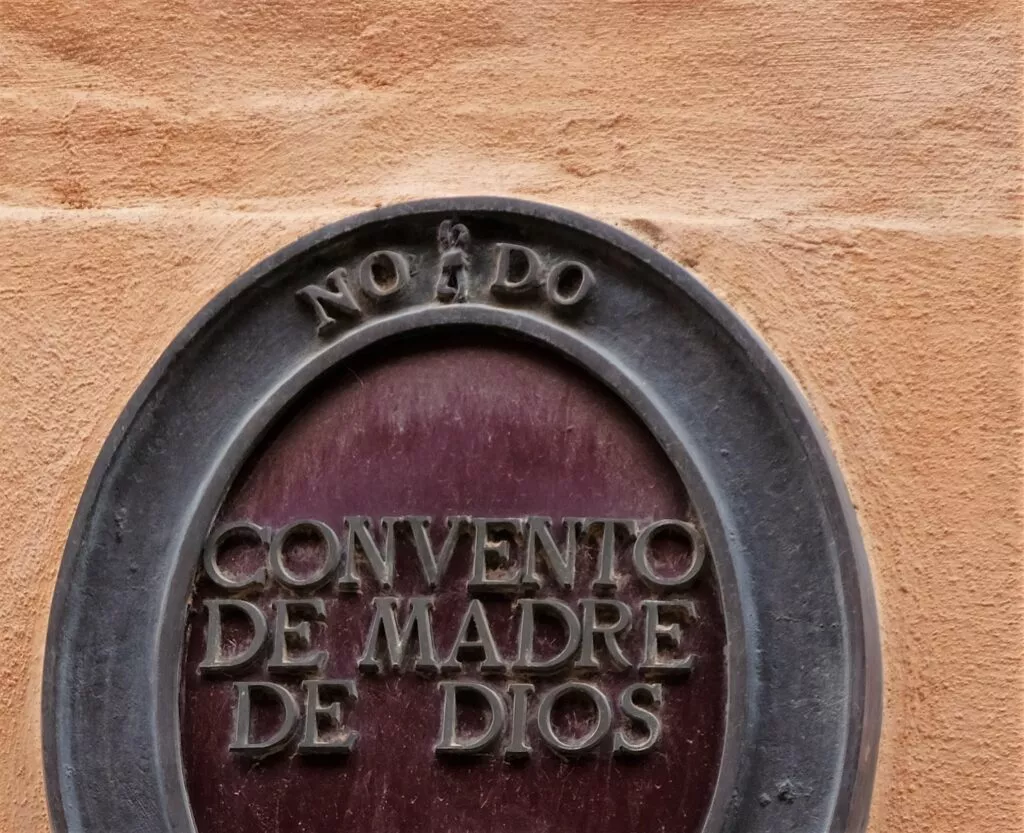
The story goes that, in the 13th century, King Alfonso X found himself in a battle with his son Sancho, who wanted to take the throne from him. The people of Seville gave their unconditional support to the father in order to keep his throne. Having succeeded in preventing his son’s plans, Alfonso X is said to have said of the people of Seville: “No me han dejado“.
Rosina’s balcony
The Balcony of Rosina is undoubtedly the most famous balcony in Seville. A legend surrounds it. It is said that a scene from The Barber of Seville, written by Beaumarchais, is set in this small square, overlooked by the balcony. This legend remains a legend because the building was built after Beaumarchais had written The Barber of Seville… However, the legend has almost already become history.
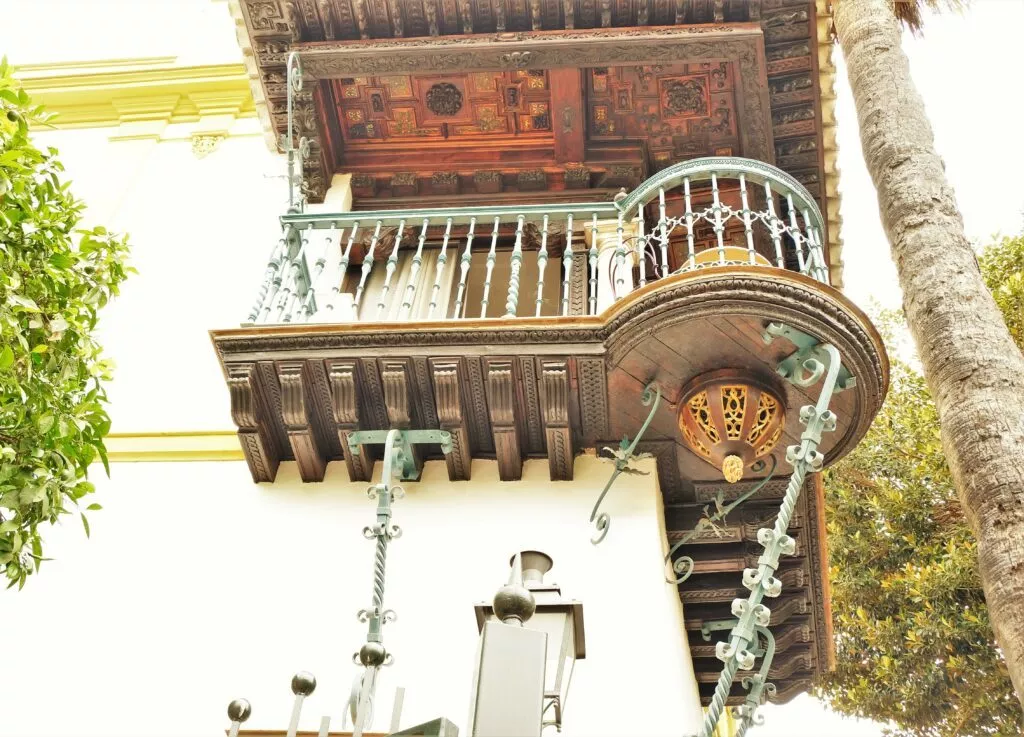
However, the plot of this scene, set to opera by Rossini, is also one of the “comic” reasons why there have been no theatrical visits to Seville for some years now. One can easily imagine that the tenor in the role of Count Almaviva with his “Figaro, Figaro, Figaro,……” has finally tired the neighbours out.
The Caracoles in May
Before moving on to the opera in Seville, we’re going to take a little ‘tapas’ break of our own.
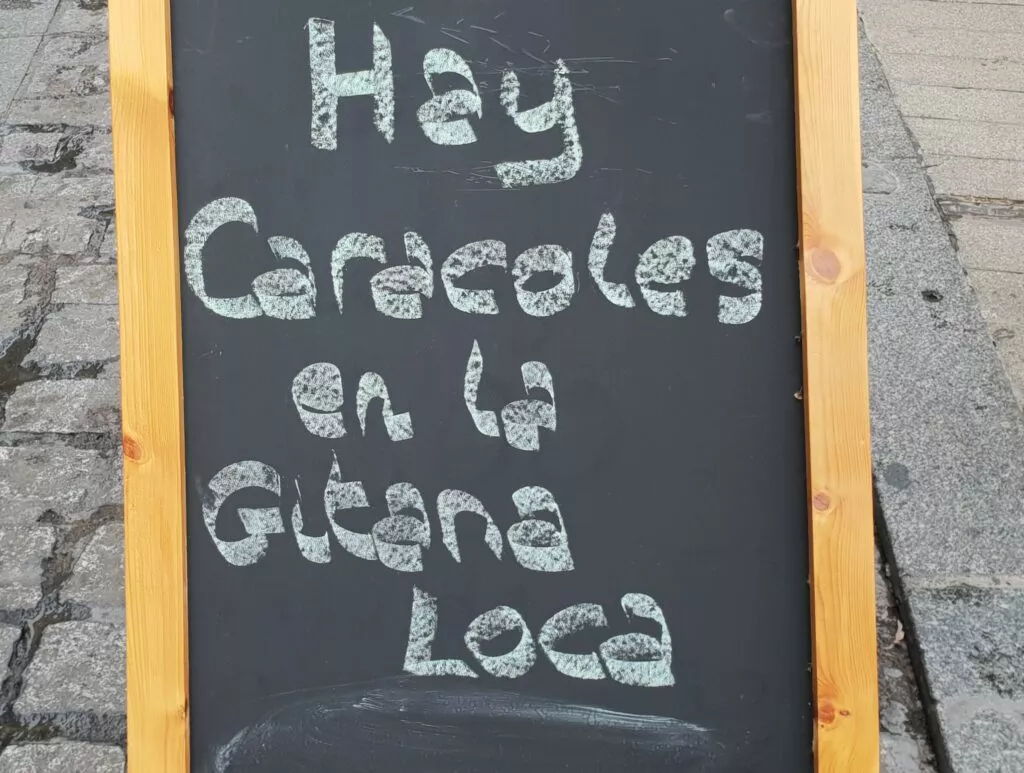
The month of May is the perfect time to discover and taste a speciality found mainly in this part of Andalucia (Seville, Cordoba, Huelva and Cadiz). It’s snails (caracoles).
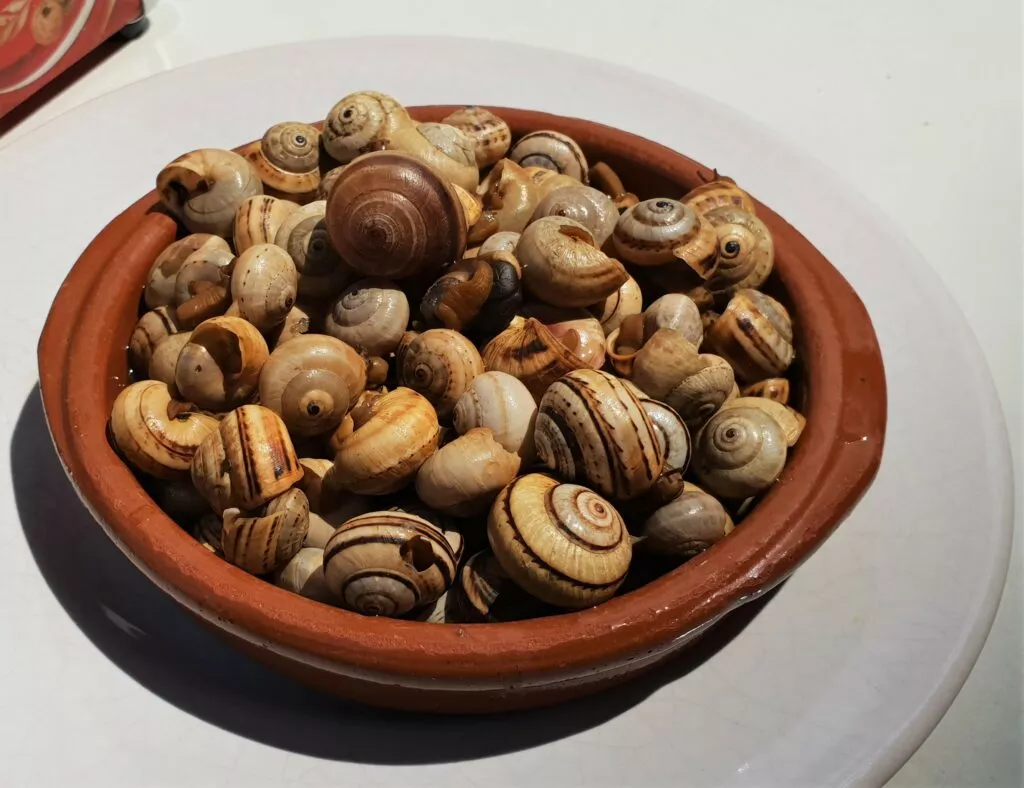
They can be found in many restaurants during this period.
Seville, city of opera
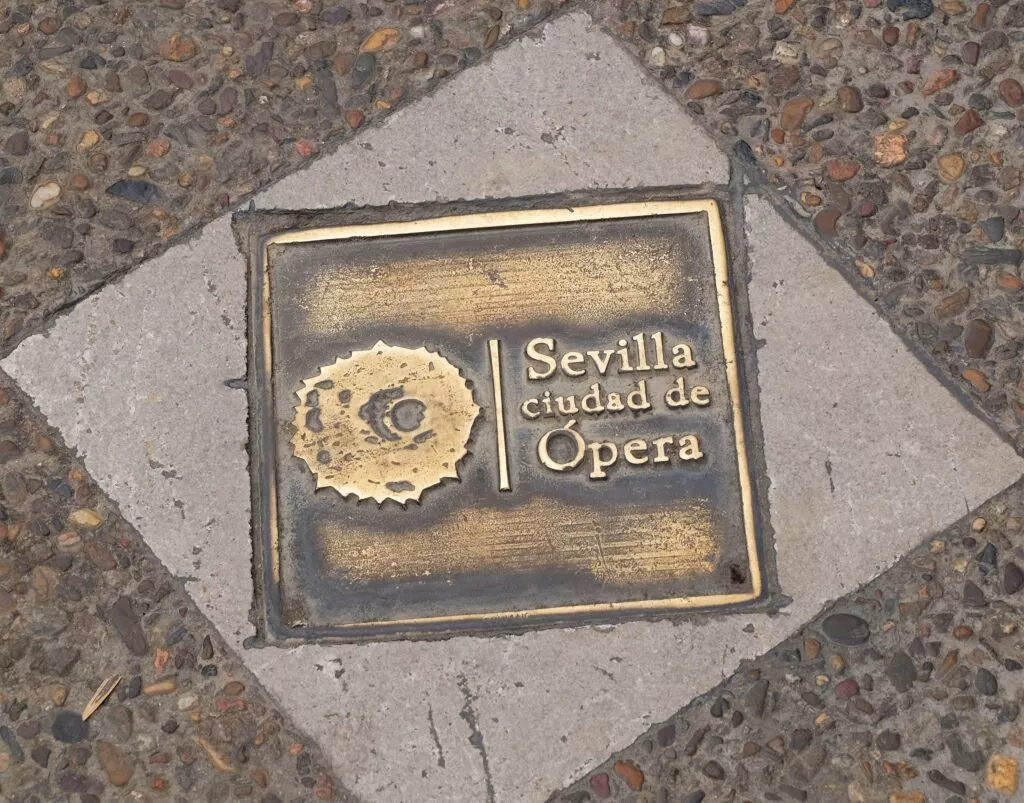
I’m not enough of a connoisseur to check, but it’s said that over a hundred operas or opera scenes use Seville as the setting for their plots. The best known are by Rossini (The Barber of Seville), Beethoven (Fidélio), Mozart (The Marriage of Figaro), Bizet (Carmen) and others.
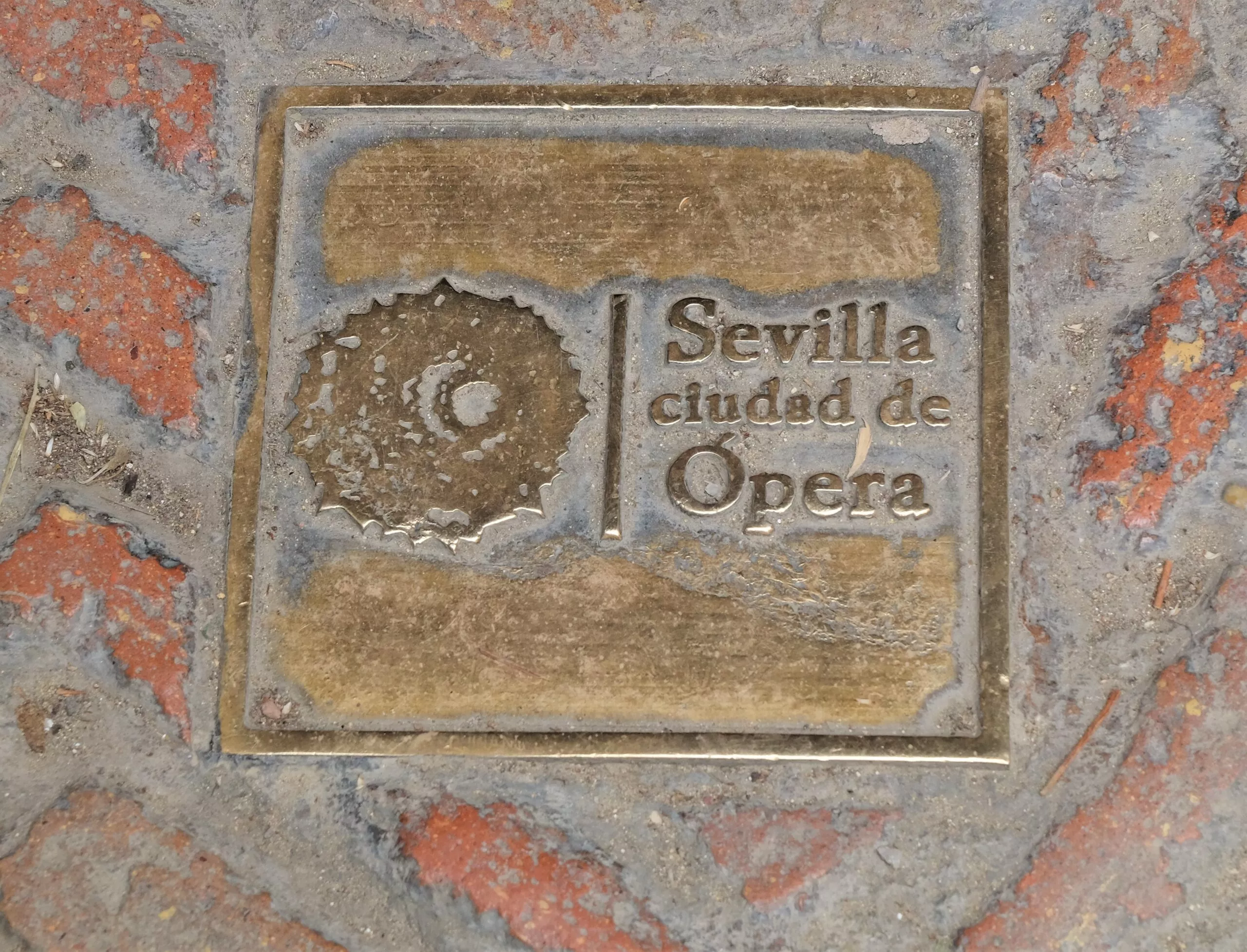
Seville, city of opera” is one of the city’s many slogans. Here’s one that marks the location of a scene from the opera Carmen (when Carmen flees from the soldiers who are after her).
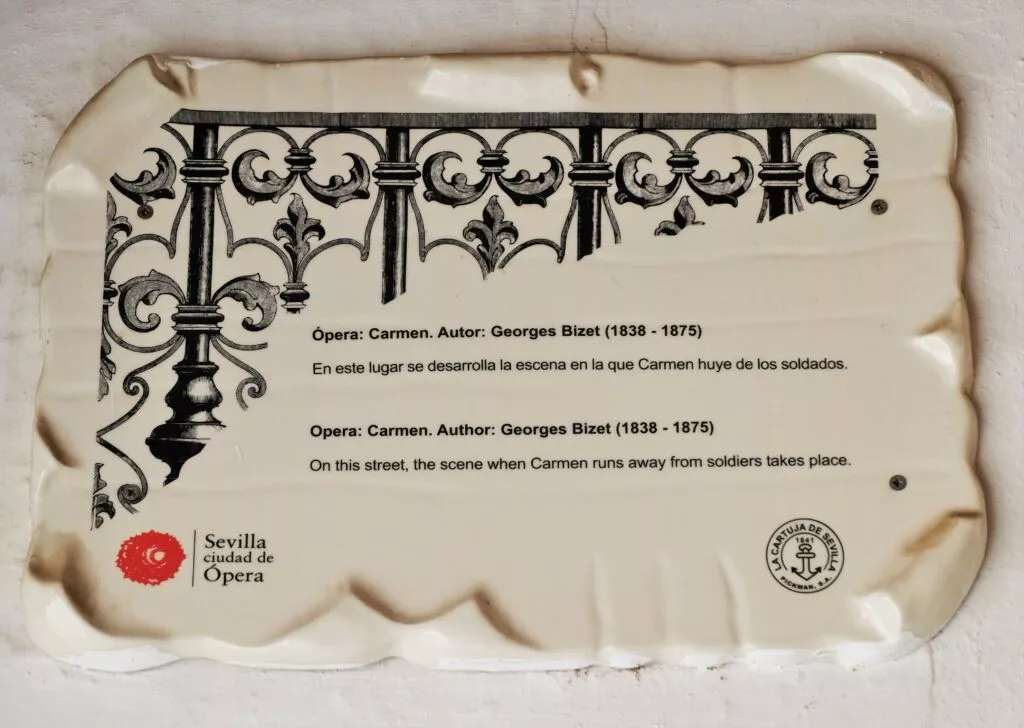
The photo shows the scene in the Juderia, in what is now Santa Cruz:
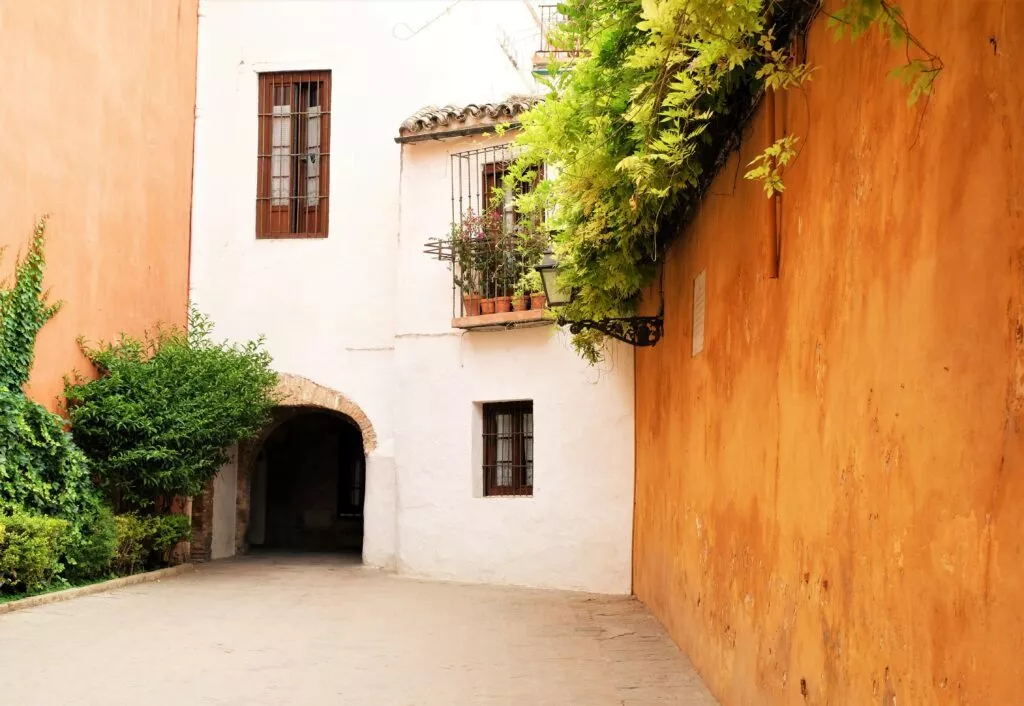
Note: unrelated to the subject under discussion, Seville was declared a “Creative City of Music” by UNESCO in 2006. It was the first city in the world to receive this distinction. It got the accolade for being one of the cradles of flamenco, for having launched several composers… and for other reasons I’ve forgotten…
An idea for an after-dinner bar: Bar Garlochí
During the day, this bar seems to have been closed for years, so you can walk past without seeing it. You have to come in the evening, as it opens from 9pm to 2am.
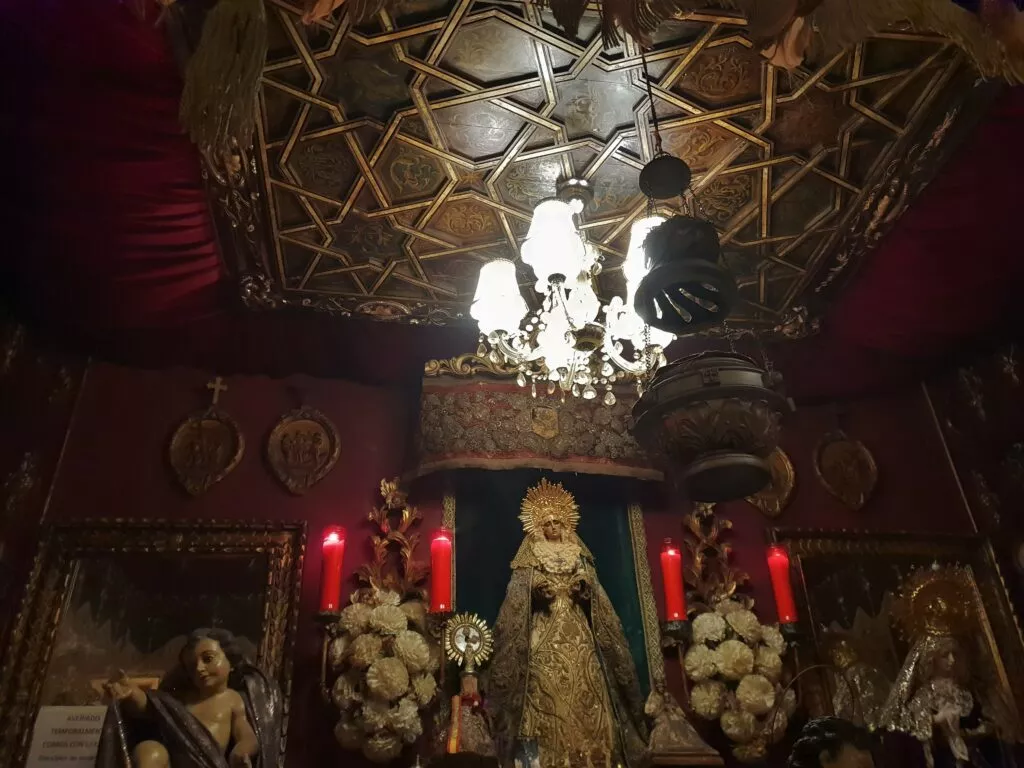
This place is absolutely incredible, with a mix of the profane and the sacred. What’s more, the atmosphere is fantastic.
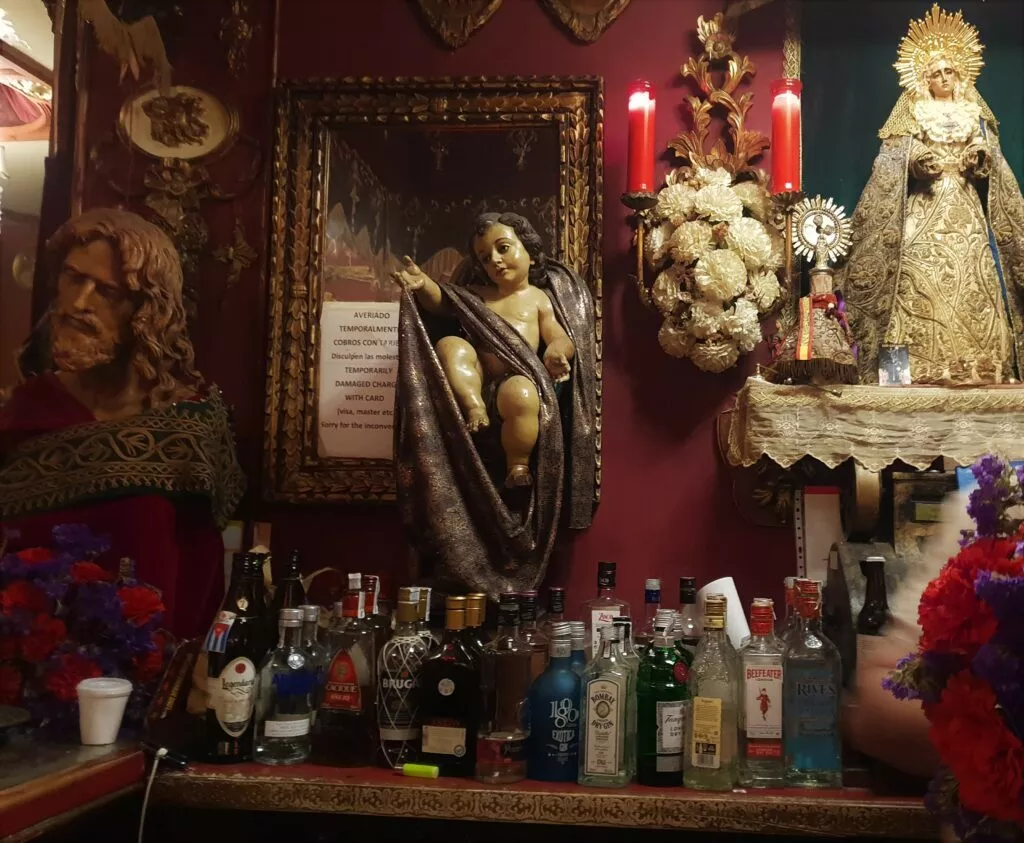
For an unusual atmosphere in Seville…. you’ll be well served!
Drinks to try: there’s no drinks menu, but the bar’s speciality is the Sangre de Cristo (Blood of Christ). A cocktail made with whisky, cava and pomegranate juice.
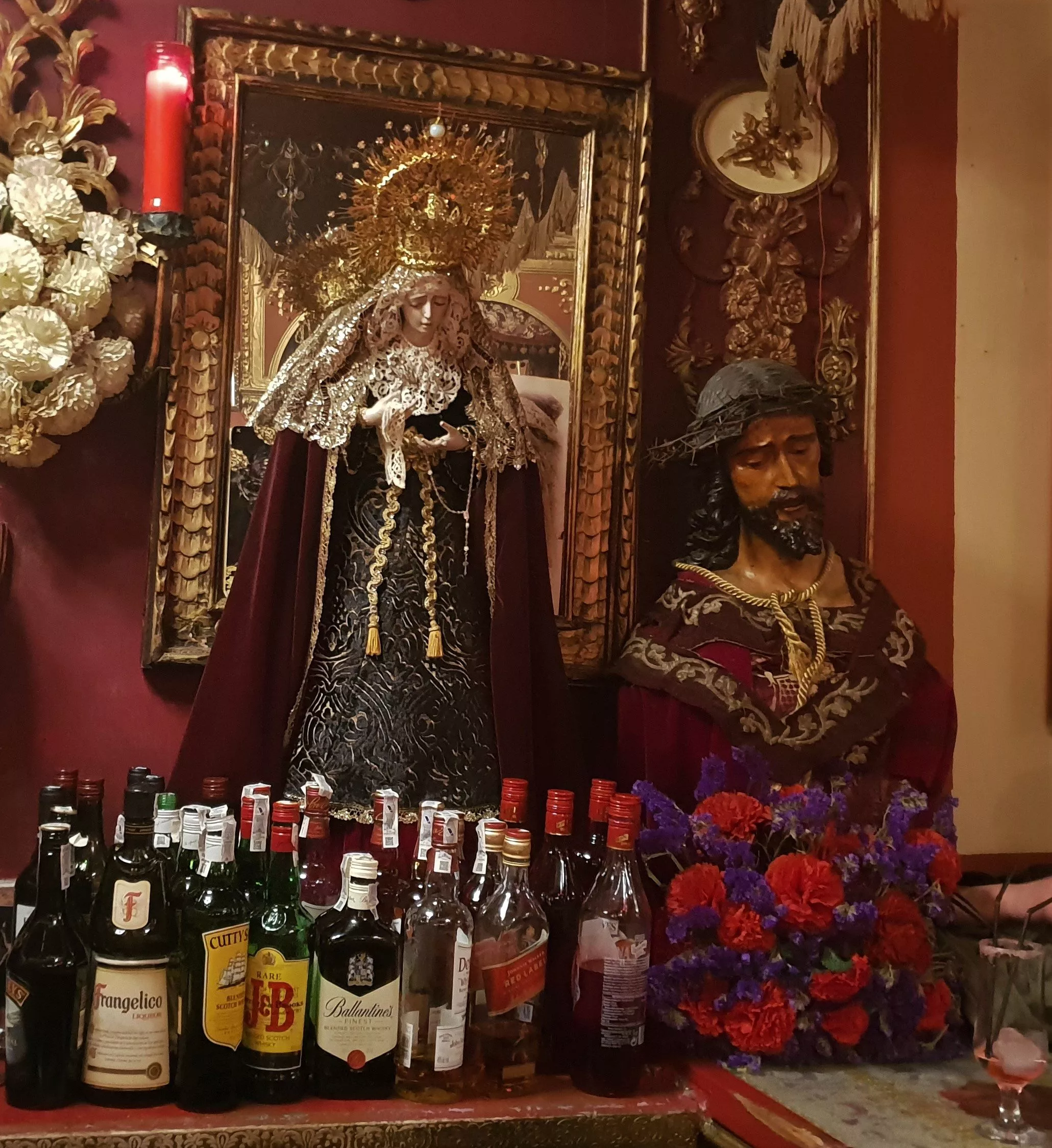
The Duchess of Alba was a loyal customer. Today, an intimate of the family, the singer Luz Casal, drops in from time to time.
Here’s the address and map to find Bar Garlochí.
The University of Seville
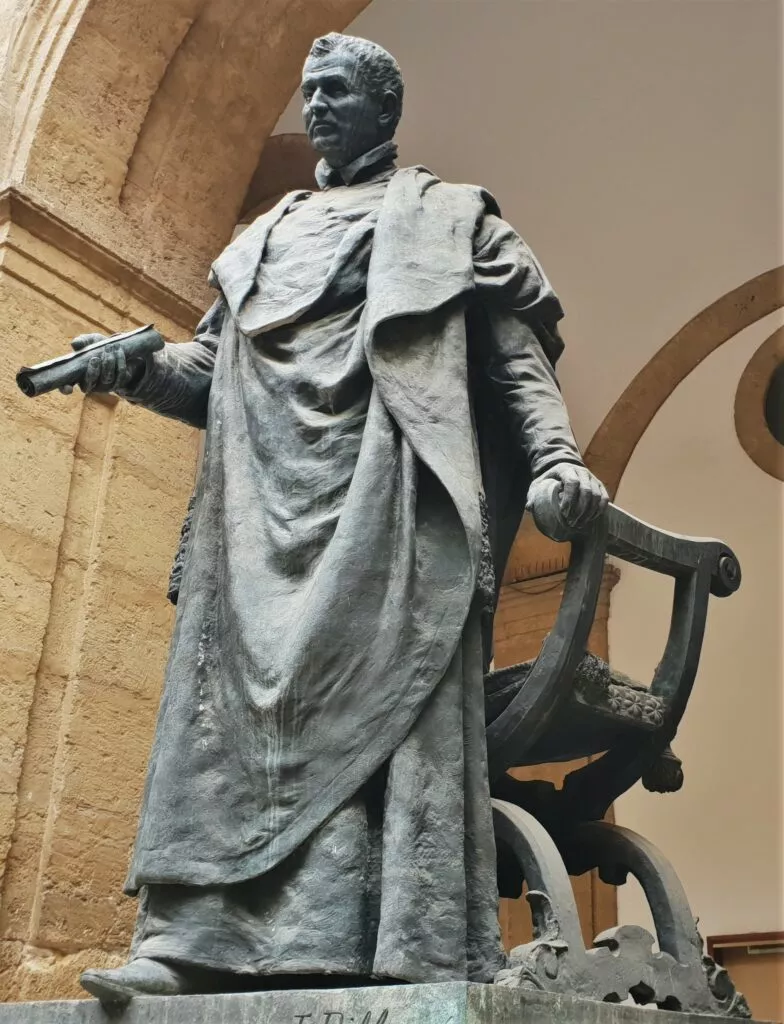
This is the kind of place that makes you want to go back to school when you walk through it. The University of Seville is incredibly beautiful.
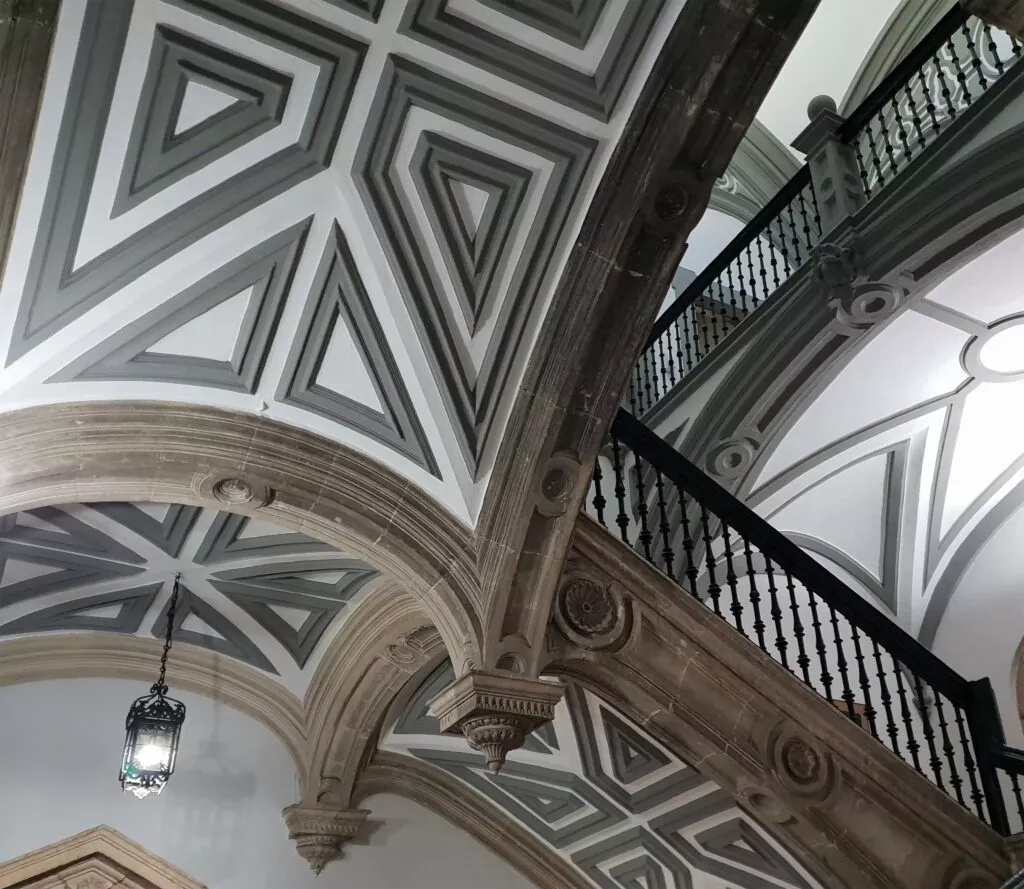
…Even the lock on the front door of the university is magnificent….
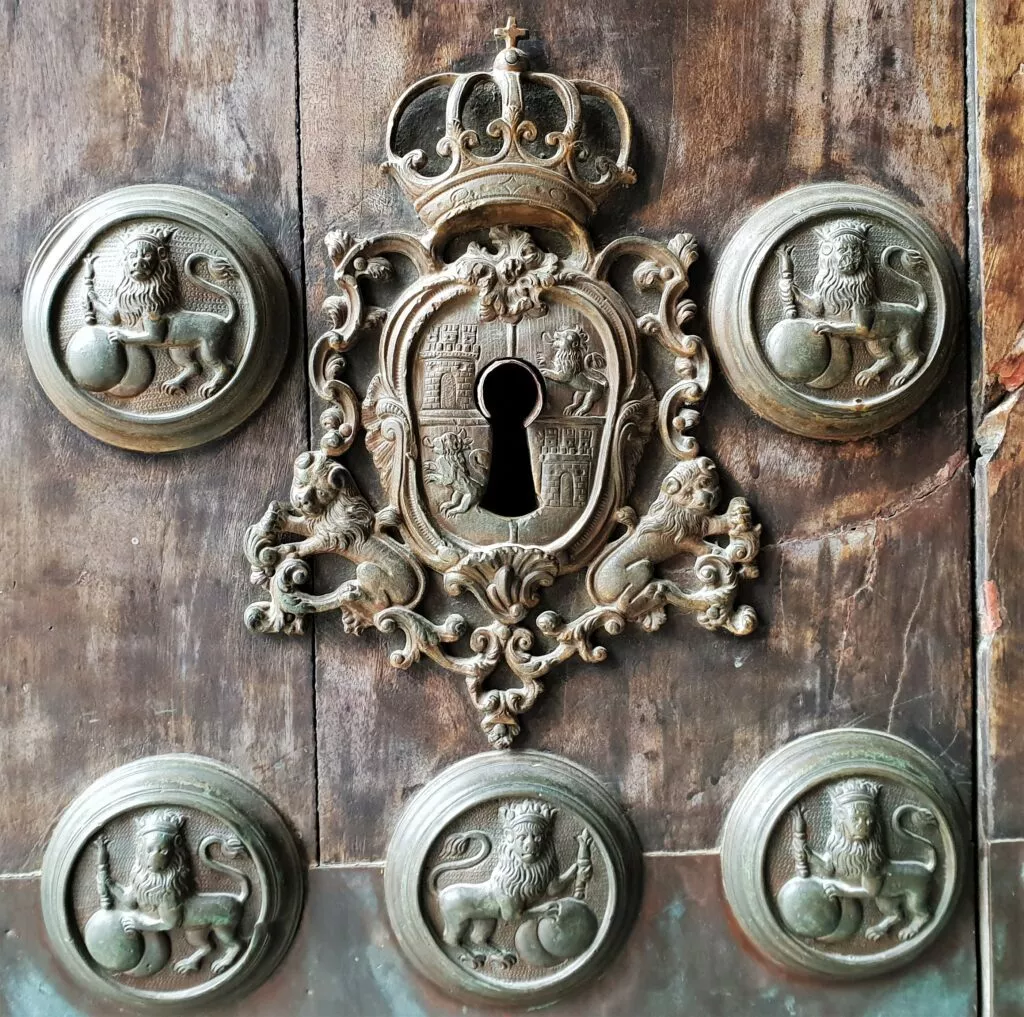
The curious thing is that the university is located in the former royal tobacco factory. This location was not chosen at random. At the time, the Seville factory had a monopoly on the tobacco market in the Americas.
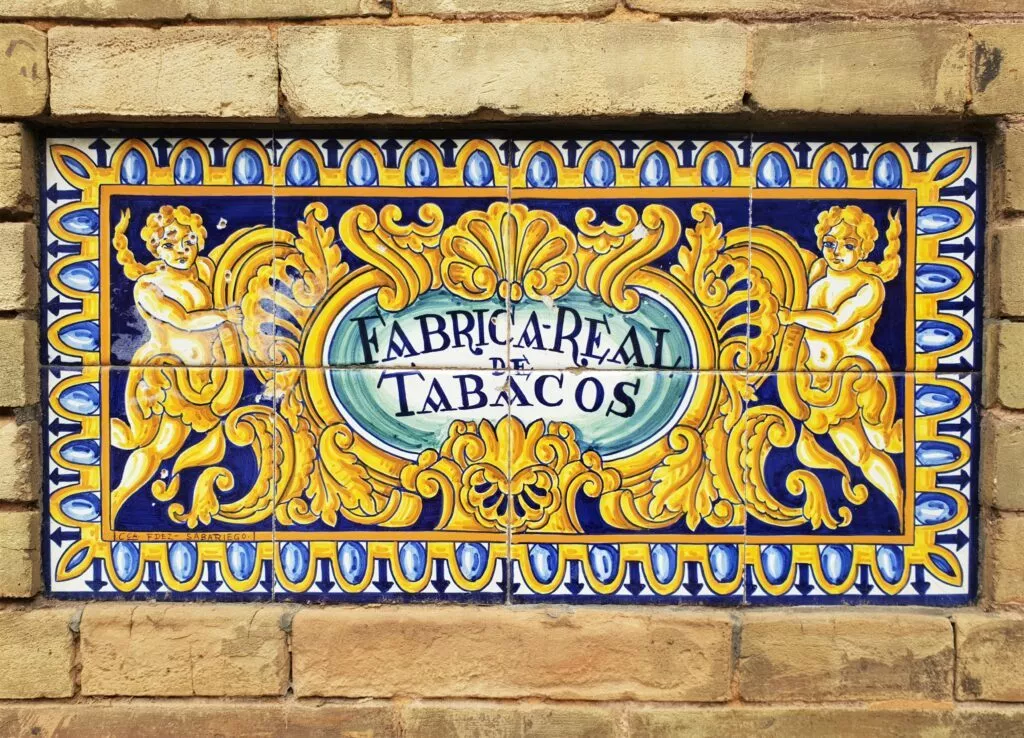
And ever since Christopher Columbus, the ships bound for the Americas left Seville, sailing down the Guadalquivir to reach and cross the ocean.
It’s a real pleasure to go there and visit what’s open to the public.
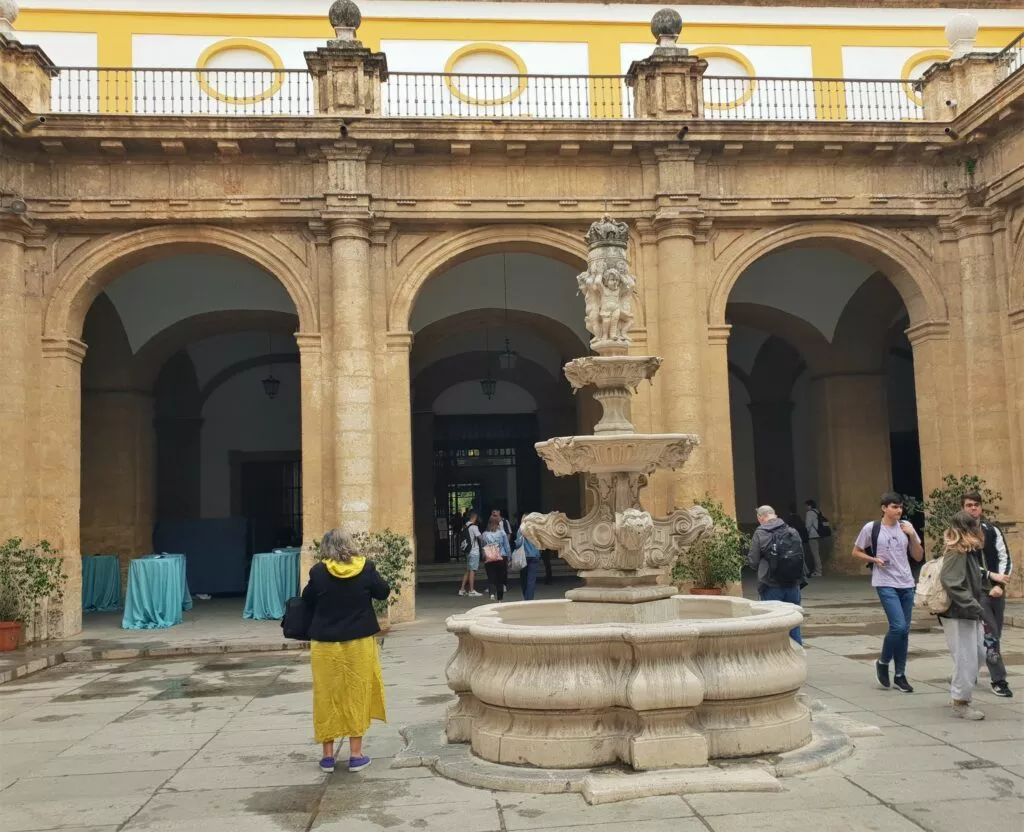
You can learn a lot about the old tobacco factory. And for opera lovers, you can imagine Carmen working in a workshop.
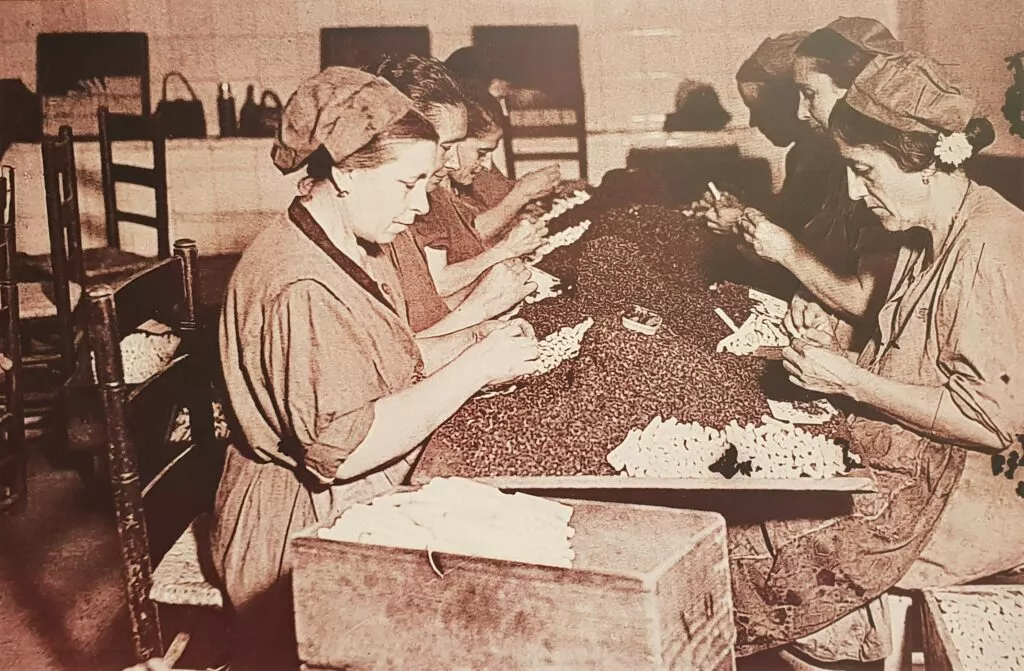
I also liked the reproduction of a statue of Marcus Aurelius, right next to the Greek and Roman Philology department! We’re not joking here.
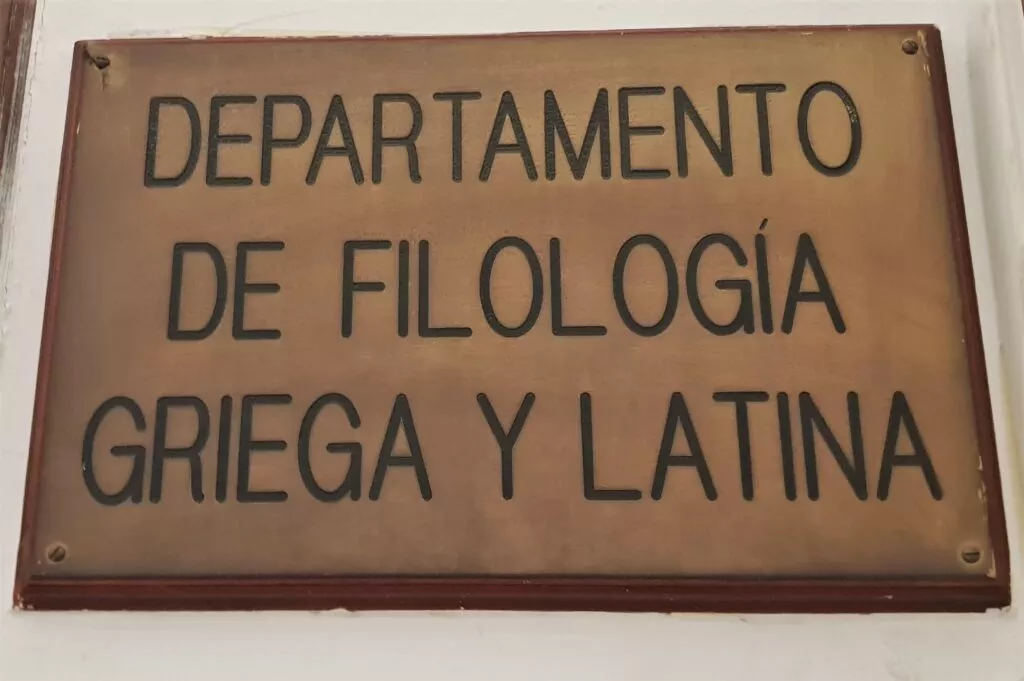
The Bar Patio San Eloy
You should know that it’s often hot in Seville. So you often get thirsty. At the end of a trip to Seville, you realise that you’ve also “visited” a lot of bars.
Patio San Eloy is a Seville institution, where you can get some local tapas. In fact, there are 7 or 8 Patio San Eloy bars in Seville.
My favourite is also the oldest, which can be found towards the Macarena district. It also has a really unusual space for a drink or lunch.
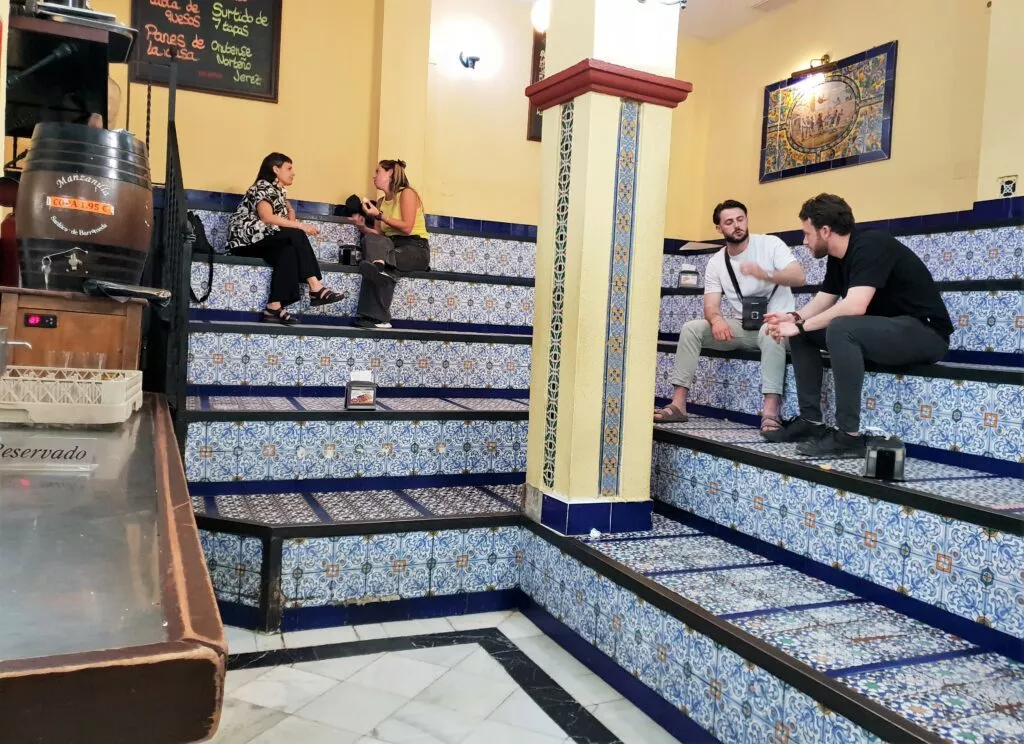
Here’s the address and map to find the oldest Patio San Eloy in Seville.
Asegurada de incendios ceramics
These “Asegurada de incendios” ceramics above the front doors of buildings date back to the 19th century. As in other major cities, the public fire service did not yet exist (the idea came from London).
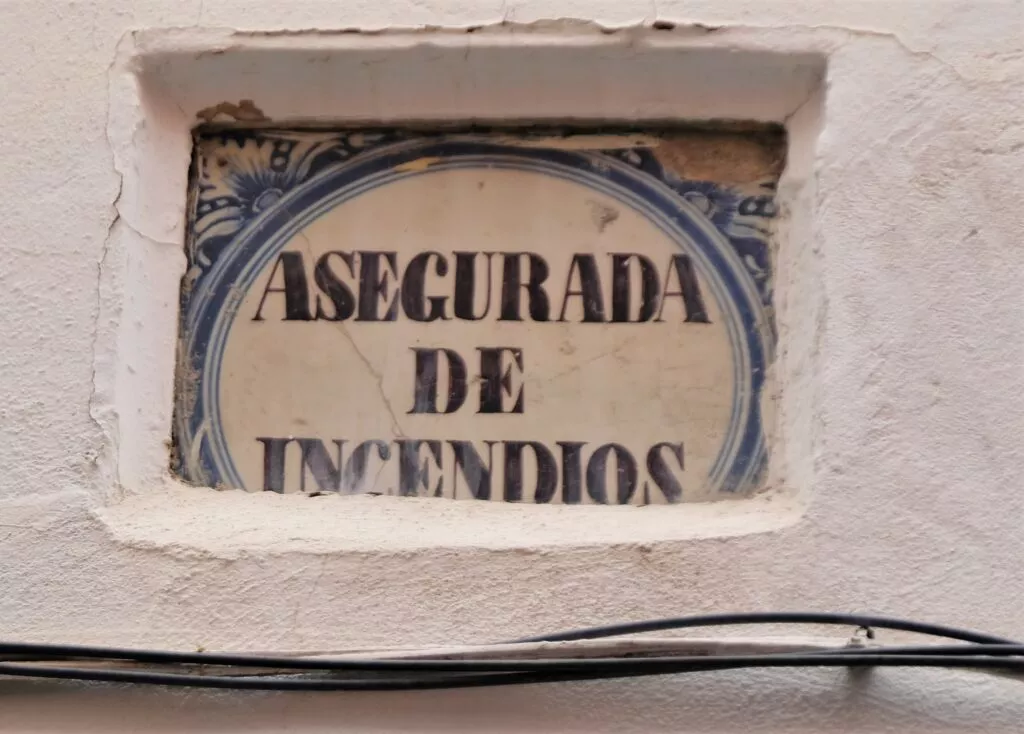
Teams of men to fight fires were private, and each insurance company had its own team. The insurance company withdrew the plates when the fire premium was not paid, and the buildings concerned were not entitled to the “same service” in the event of a problem.
Nights in the Alcazar gardens
Here’s an idea for a magnificent and enchanting summer evening in Seville. Every year a music festival is held in the gardens of the Alcazar. This year, 2024, marks the 25th edition.
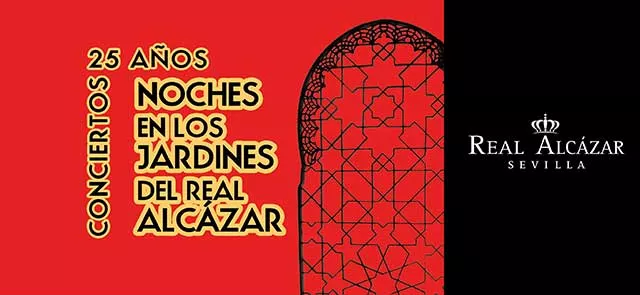
It’s a magnificent show, for 7 euros, in an exceptional setting.
Please note that the entrance is the opposite way to the Alcazar. Access is via the Puerta de Alcoba (below), and the concert generally starts at 10.30pm.
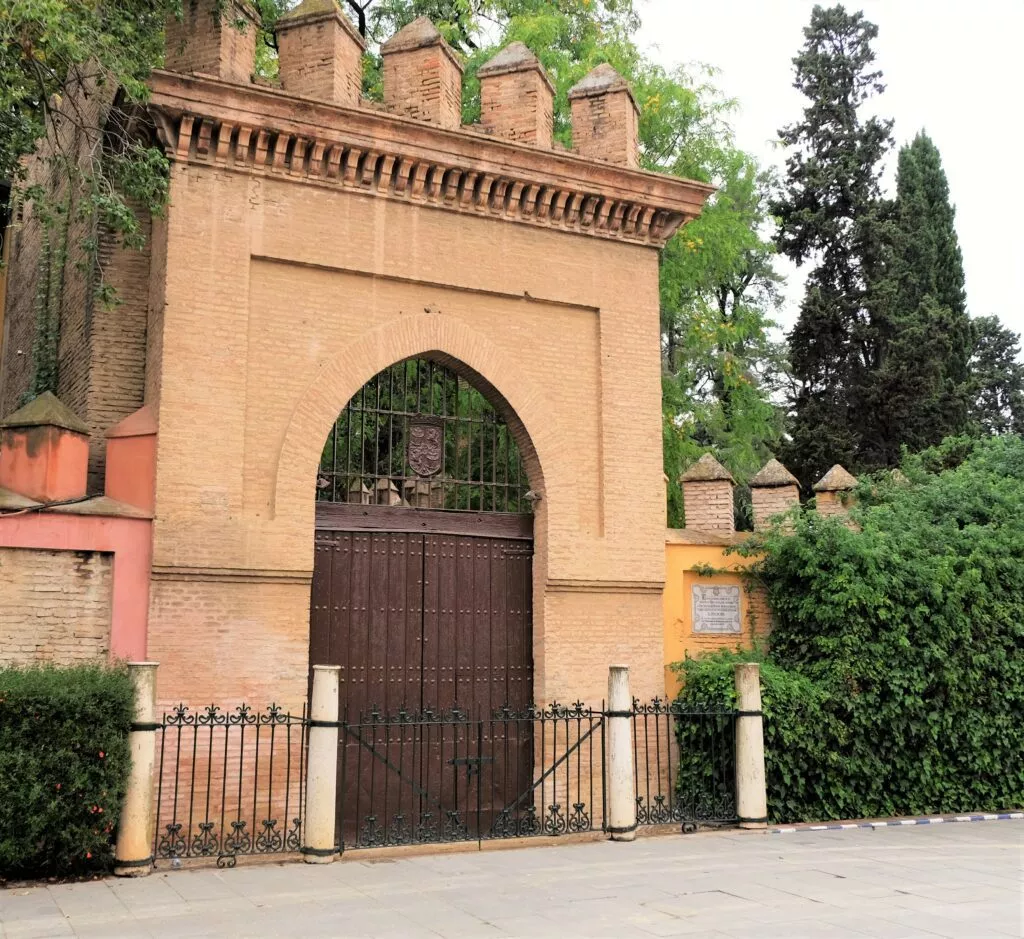
The concert stage is located in the Jardines del Cenador de la Alcoba.
The 12th-century city wall
Seville still has some elements of the city walls from the Almohad period.
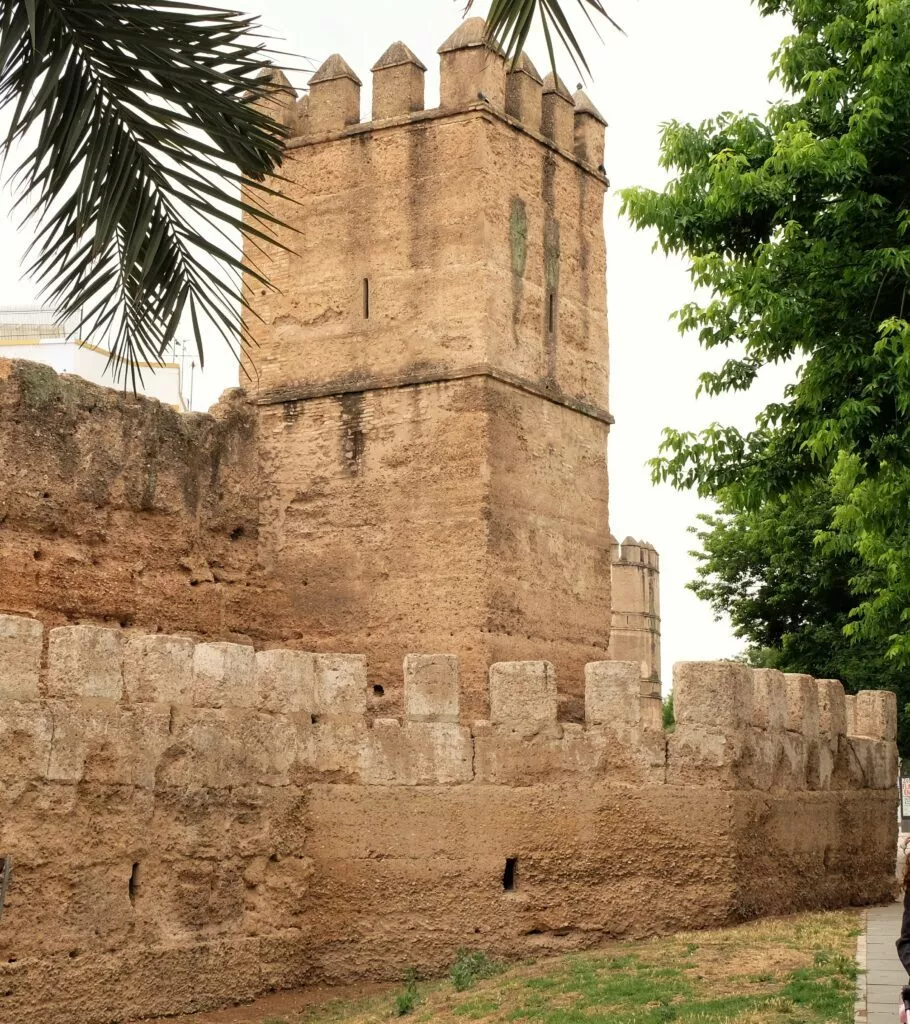
It was the 12th century and Seville was called išbíliya. The most important part of the city walls can be seen in the slightly off-centre La Macarena district.
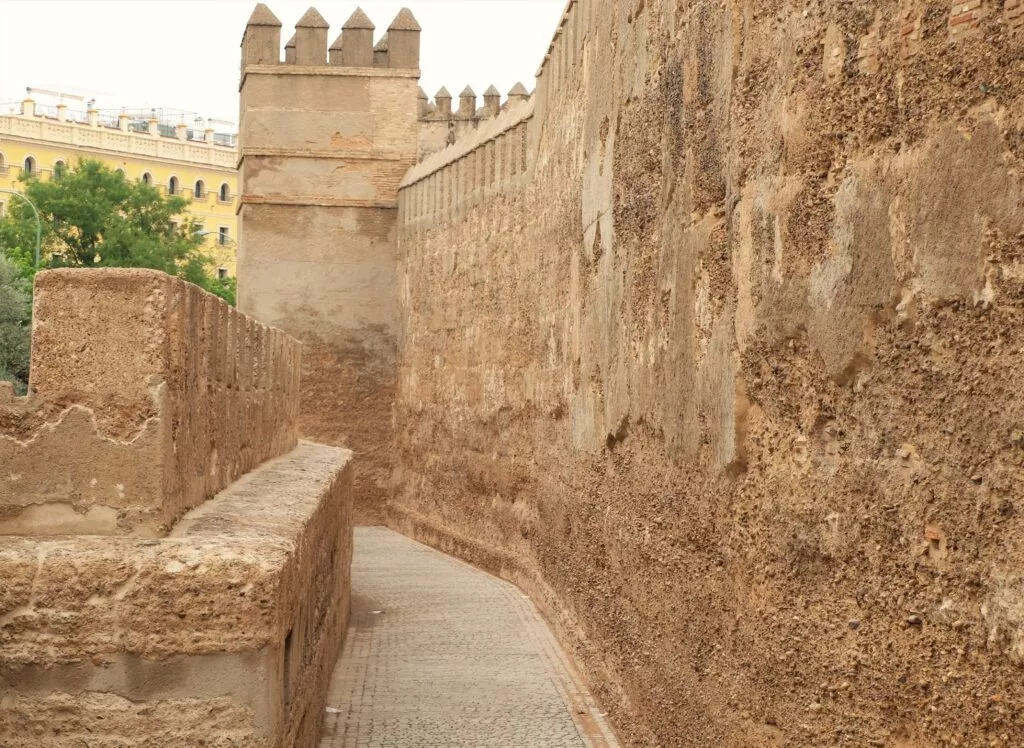
The Archive of the Indies
This is a very interesting building, with a rather discreet entrance, which is quite incredible to visit. And it’s free to visit.
It dates back to 1785, and the man behind the project was don José de Gálvez, from the curious village of Macharaviaya. This building, right next to the cathedral, brings together all the originals from 3 centuries of Spanish history in the territories from the Americas to the Philippines. There are, of course, all the writings of the famous navigators, starting with those of Christopher Columbus.
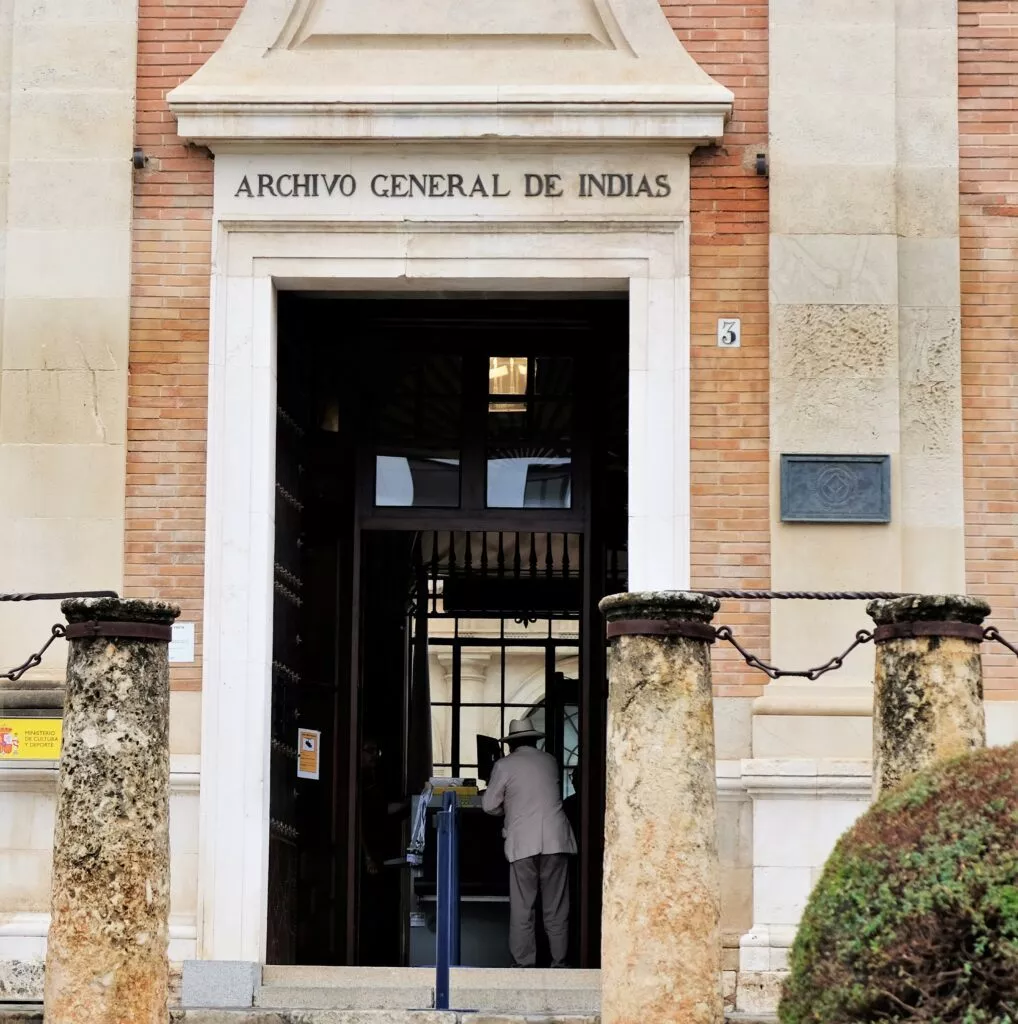
It is nothing less than the documentary centre of what was to become known as the New World.
Note: there are 8 km of linear documents, containing 80 million handwritten pages…
Religious crafts
There is one craft that is rarely talked about, but which is absolutely incredible: religious craftsmanship. Many craftsmen work and make their living from, among other things, the manufacture and handling of processional thrones.
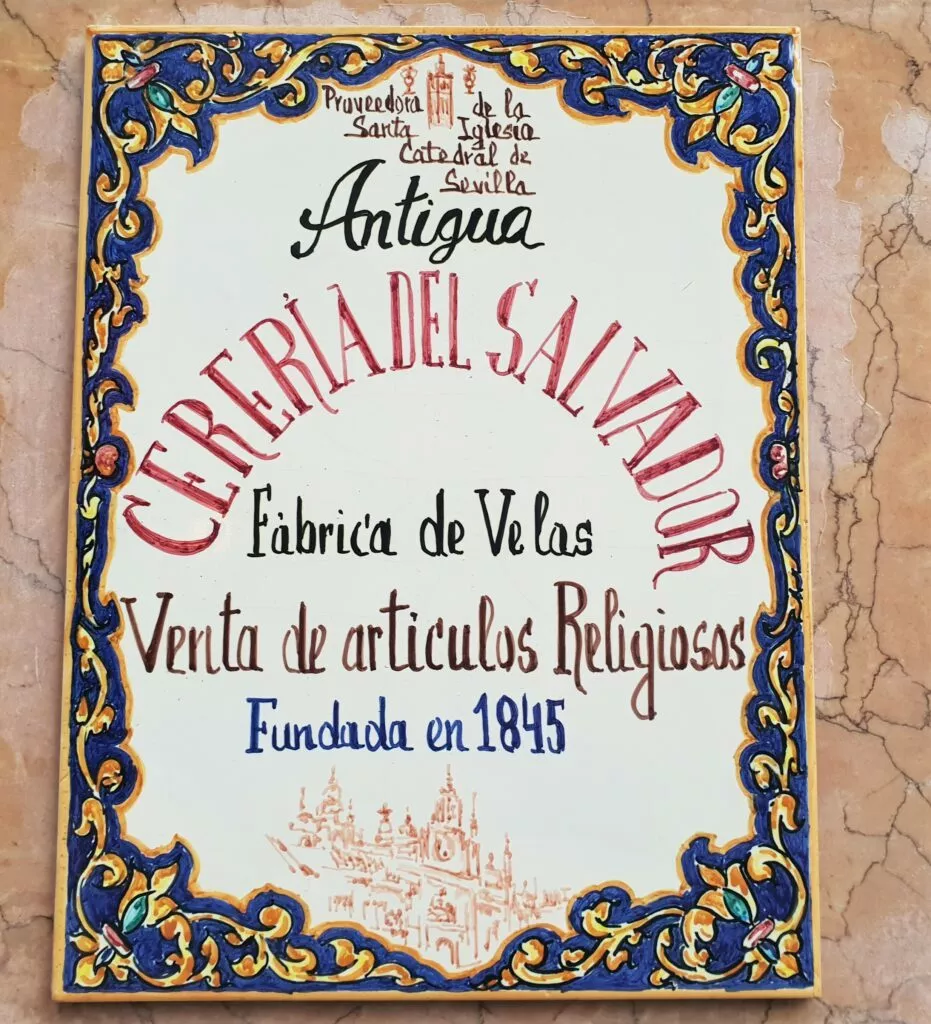
For believers, this craft also offers a wide range of decorative objects and items to wear.
Below is a photo, which may seem funny, but it’s serious.
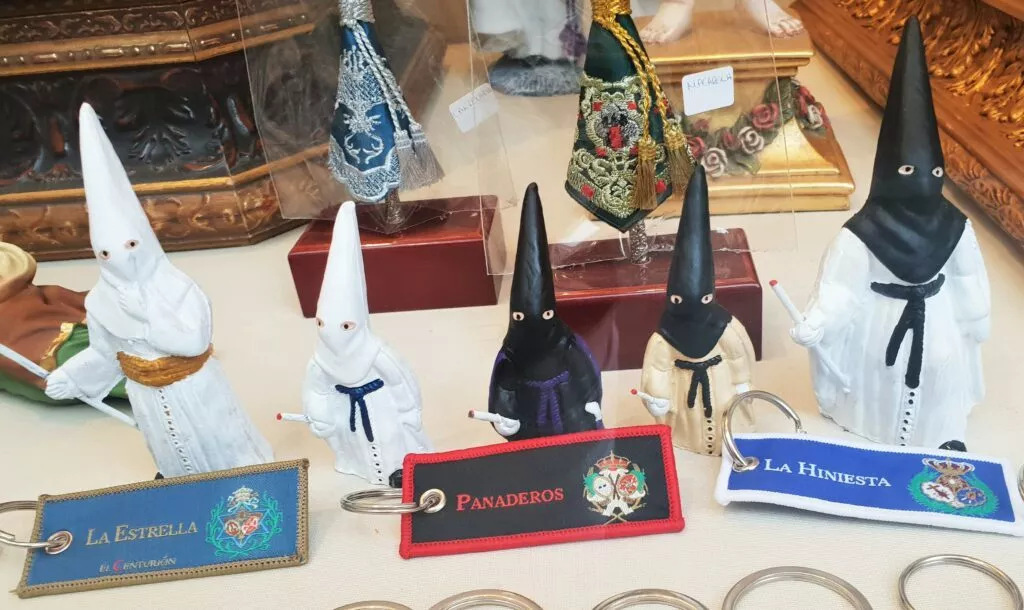
The curious wheel-shaped stones on the façades
Many round stones can be found at the bottom of buildings in Seville. This is particularly true in the Santa Cruz district (the old Juderia of Seville), which has many very narrow streets.
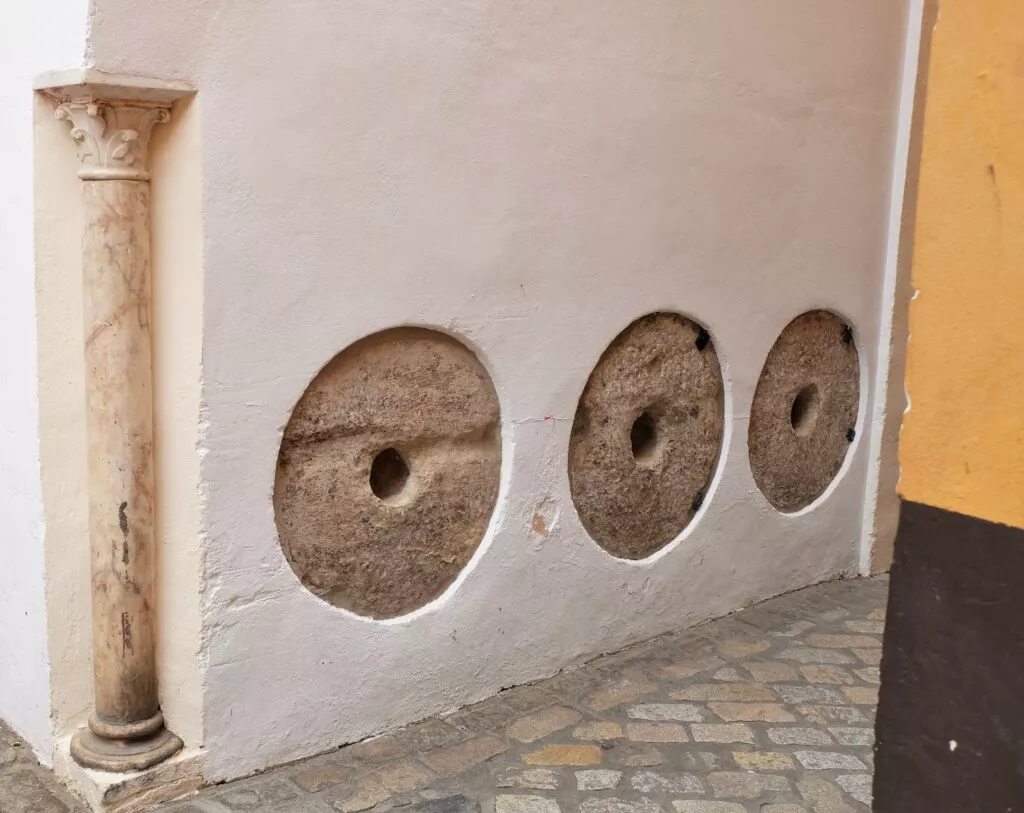
This curiosity is due to the fact that the carriages that passed through these narrow streets damaged the buildings. And as the buildings in the town did not incorporate hard rock to protect the bottom of the buildings, the idea was found to use millstones.
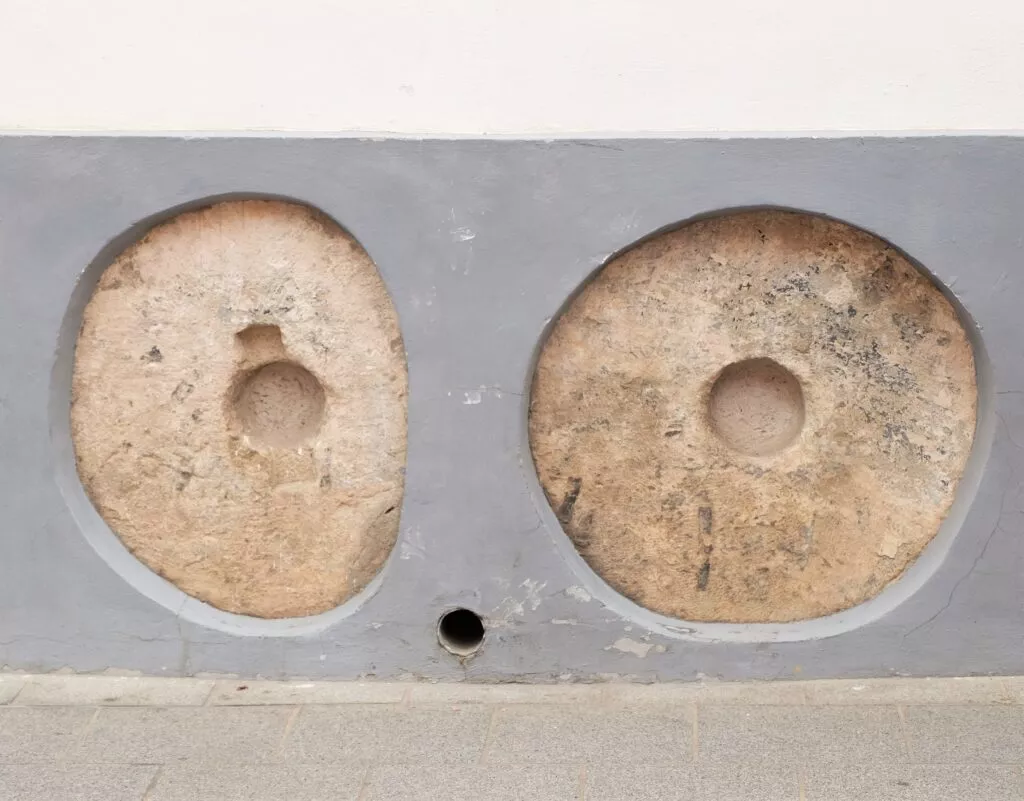
The millers and their nearby flour mills therefore served to “solidify” the town.
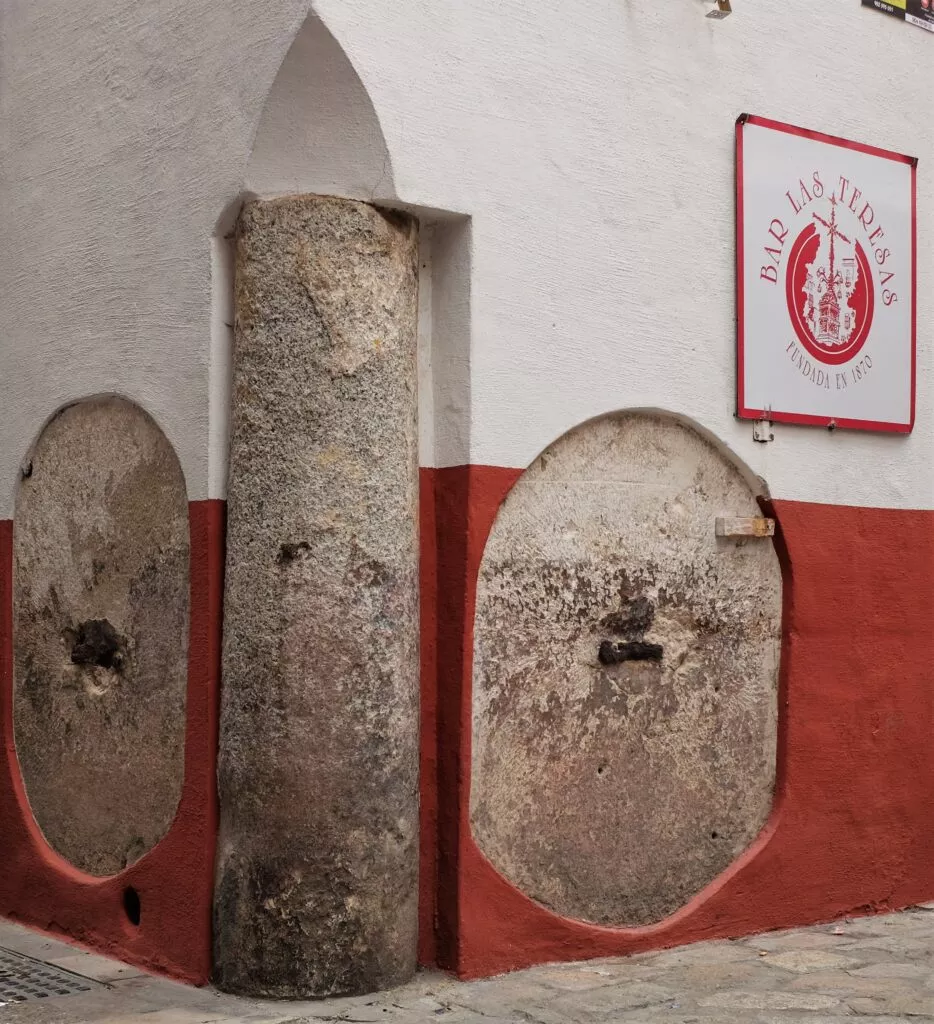
A bar to discover orange wine
After walking through all these streets, and given the heat, it’s a good idea to stop off again at a bar. Here’s a traditional bar where you can try orange wine, a Sevillian speciality made from bitter oranges. To be discovered in this bar.
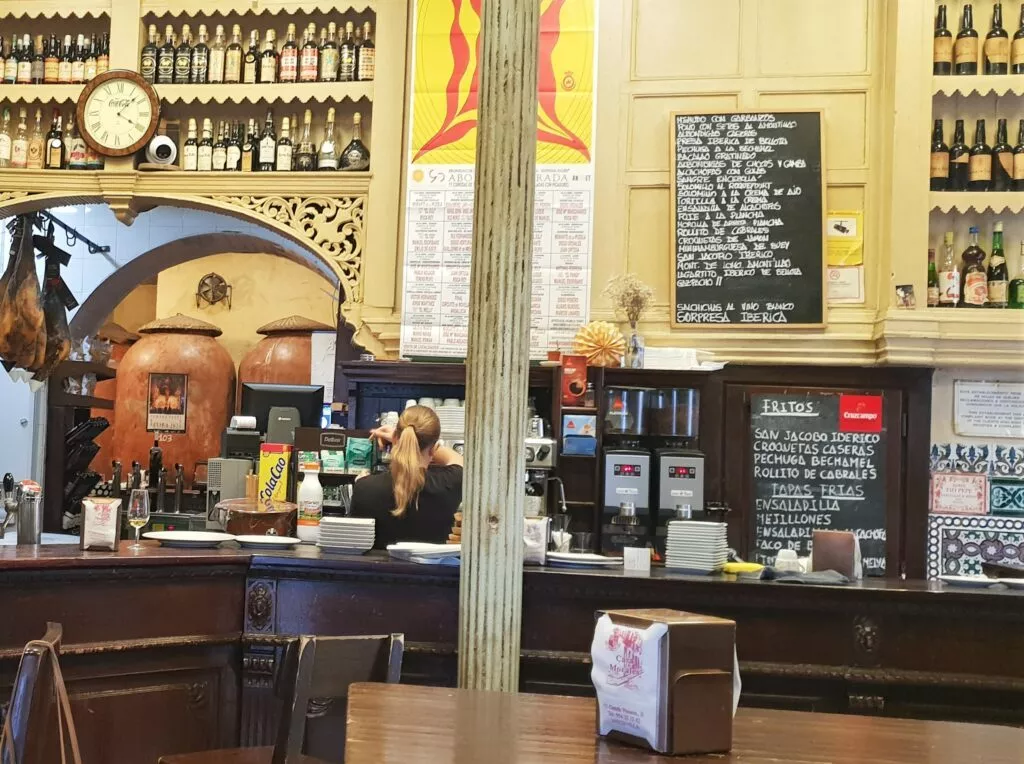
Here’s the address and map for Bar Casa Morales.
Discover 3 Roman marble columns in the heart of Seville
Pictured below are three Roman columns dating from the time of the Emperor Hadrian, at the end of the 1st century AD. They are located in Calle Marmoles
Note: The Roman emperor Hadrian was born in Italica in 76 AD. The city of Italica, founded by Scipio the African, is located right next to Seville, and is well worth a visit.
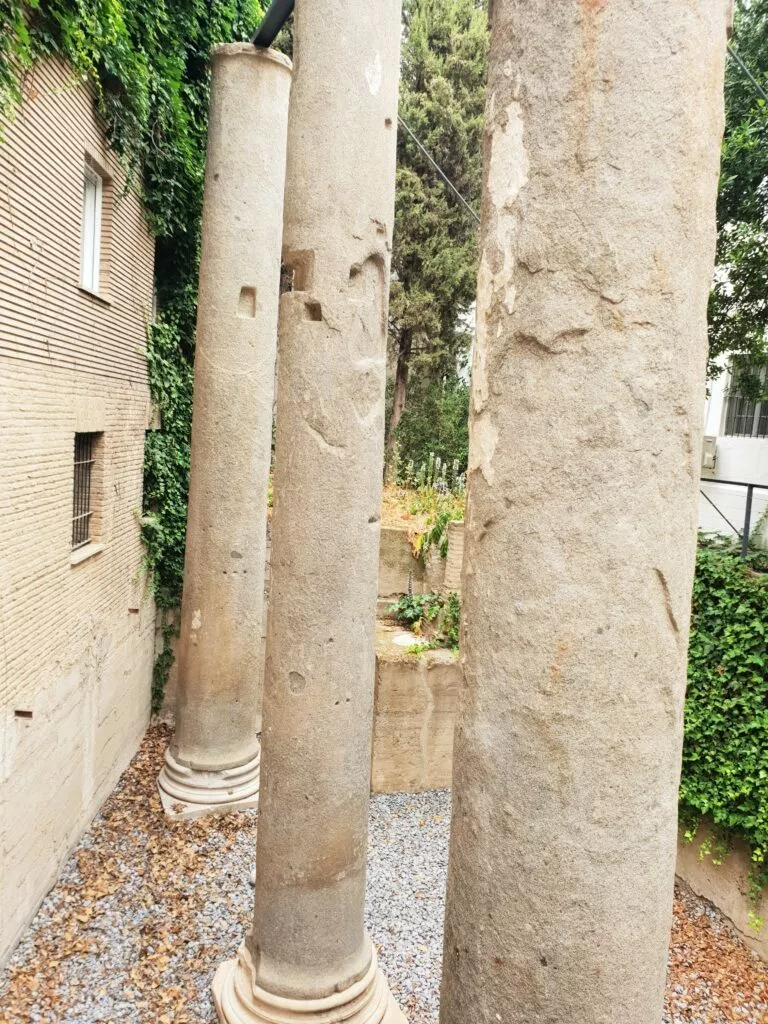
As well as being lucky enough to have found them, because they have had several lives…. They are unusual in that they were made from Egyptian granite, like those in the Pantheon in Rome. Their base is made of marble from a quarry in Andalucia.
The alleyway of the Inquisition
We started from one side of the Triana Bridge, so we’ll finish with two unusual places in Seville just on the other side of the bridge.
Firstly, the Alley of the Inquisition (Callejón de la Inquisición), which lies just behind the Triana covered market. It has a terrible history.
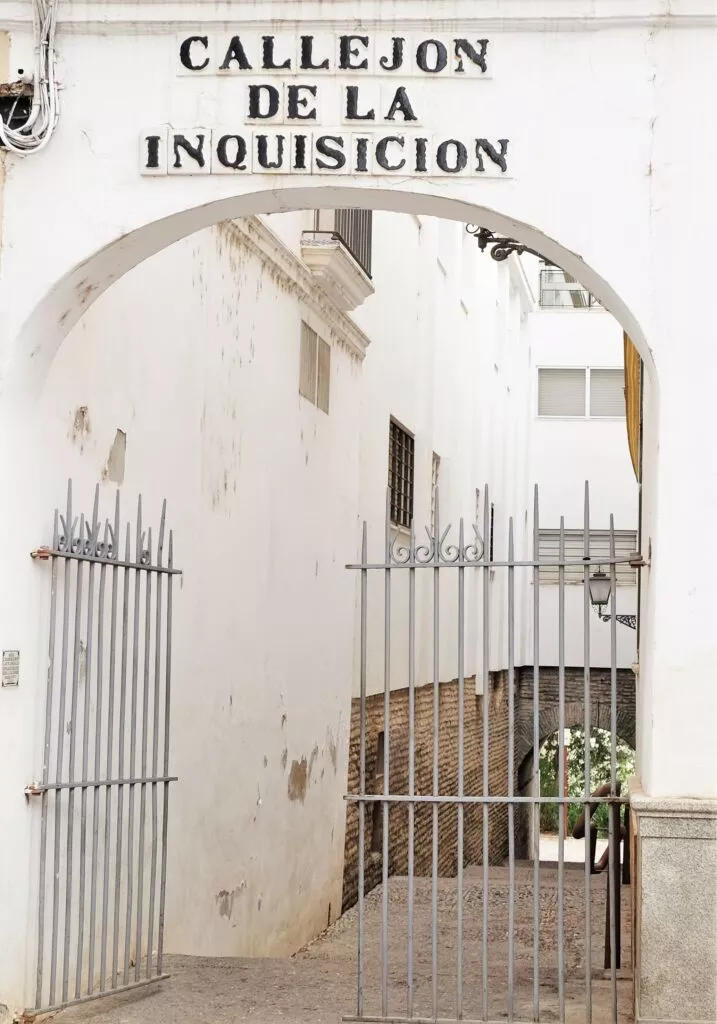
At the end of the 35 metres of this alley was the Holy Office, the Tribunal of the Inquisition, where heretics were judged, and of course the prison where heretics were locked up before being burnt at the stake.
Note: part of the Holy Office and the Tribunal of the Inquisition is now a hotel.
One last unusual spot in Seville…hidden at Triana market
Hidden between the stalls of fruit, vegetables, cold meats and fish is a tiny theatre:
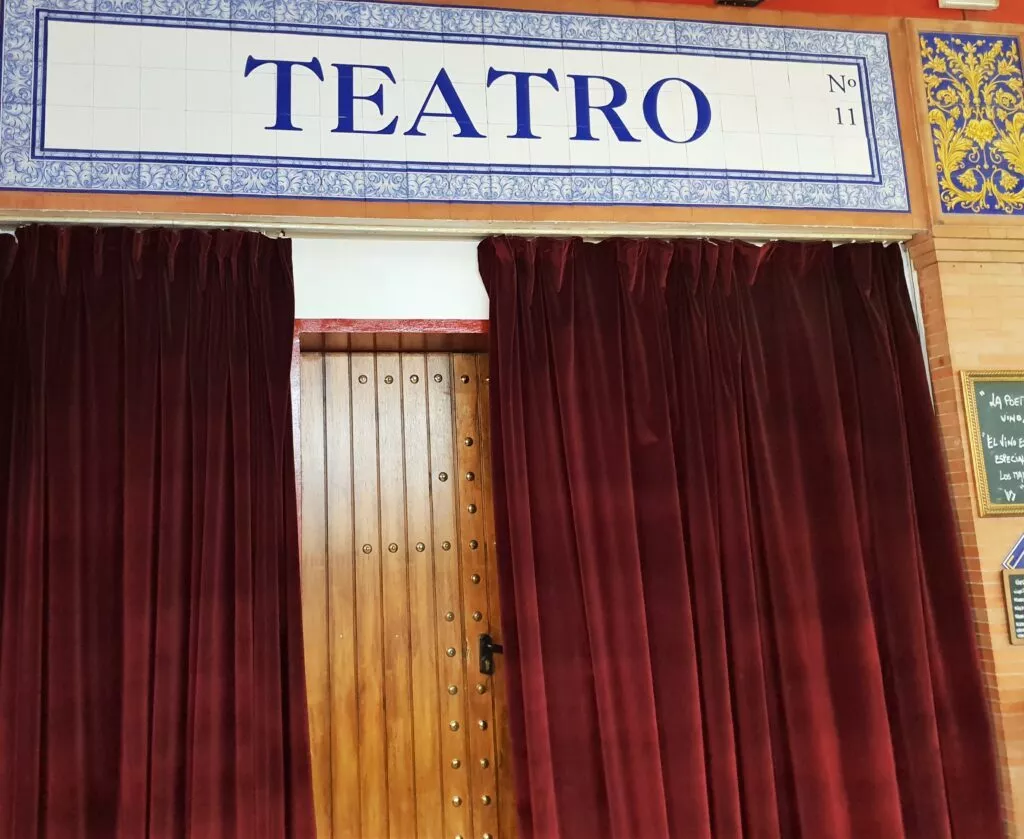
It is perhaps the smallest theatre in the world, with just 28 seats… Flamenco is sometimes performed in this very intimate venue.
In the following link you will find the current programme of the CasaLa Teatro.
Book accommodation in Seville
Below is a search facility for finding accommodation in Seville. Here are 2 suggestions to keep with the theme of the article:
Hotel Sevilla kitsch
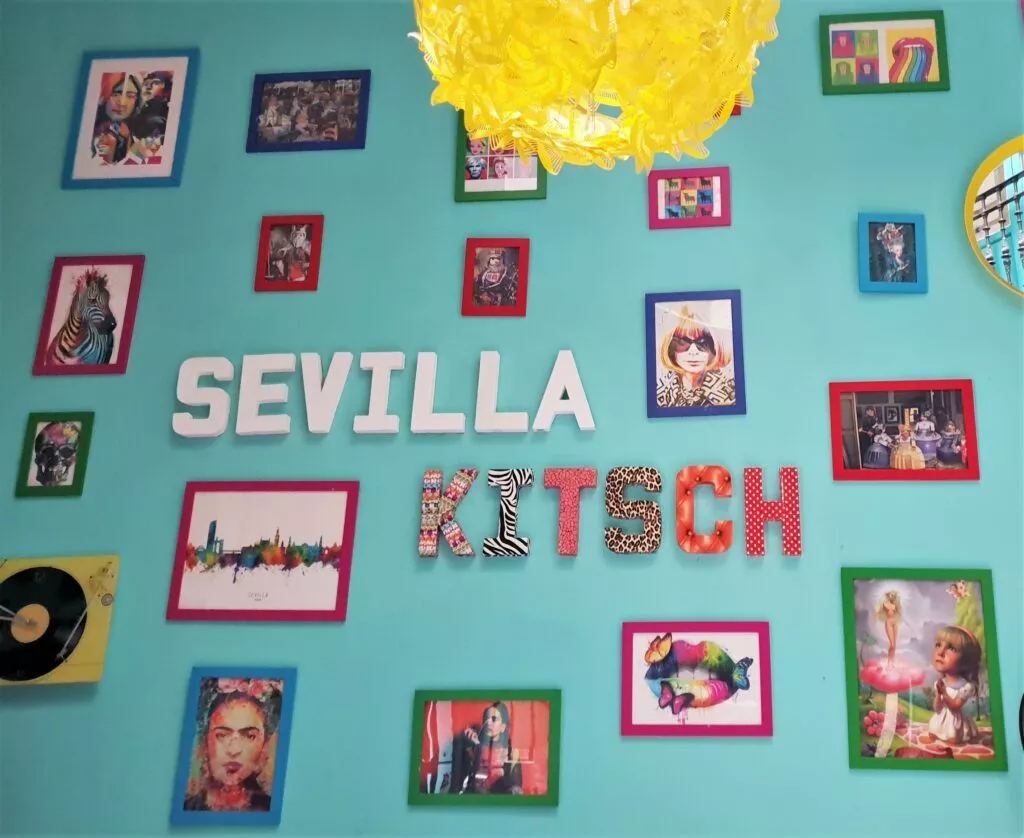
This hotel is right in the centre, 2 minutes from the cathedral, so it’s ideally located. The place is quiet, with just the occasional sound of horses’ hooves passing by, which is quite surprising.
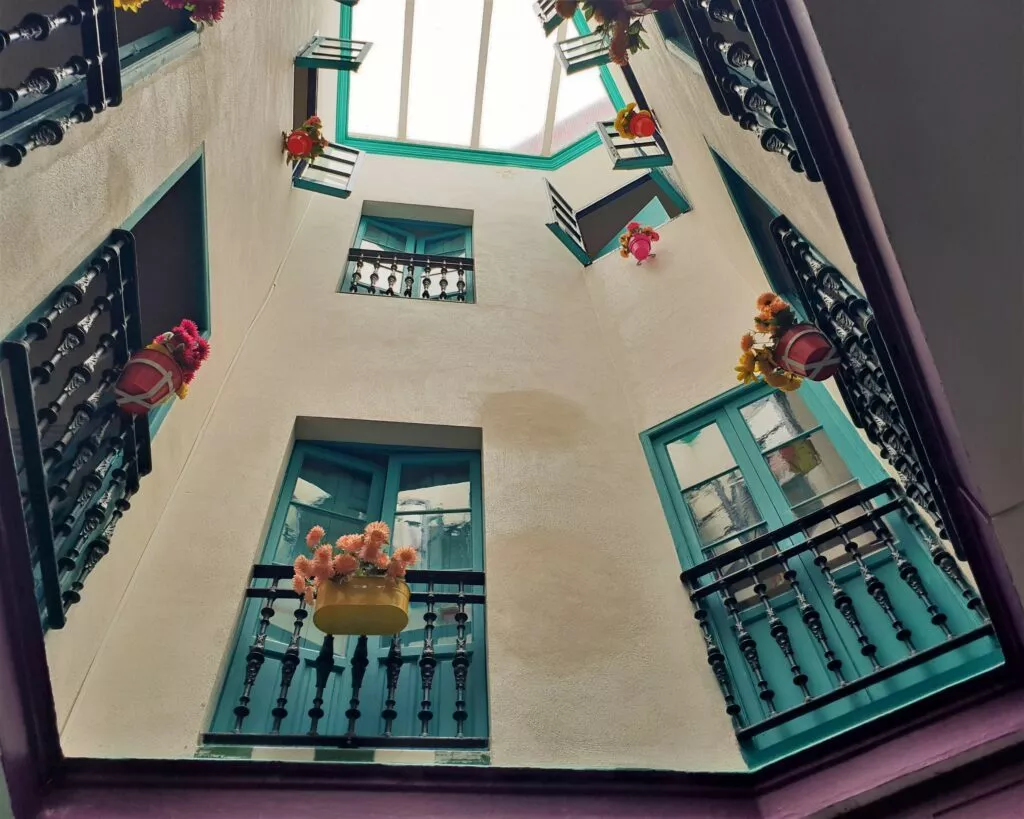
Here’s the link to the Sevilla Kitsch hotel to see photos and/or book.
Casas de los judios Hotel
This is a truly extraordinary place for those lucky enough to stay here, as it is a 4-star hotel.
It’s a beautiful hotel with a huge number of patios and rooms. I was lucky enough to visit one of the patios, with just one room, which caught my eye: “Casa de Mose Bahari“.
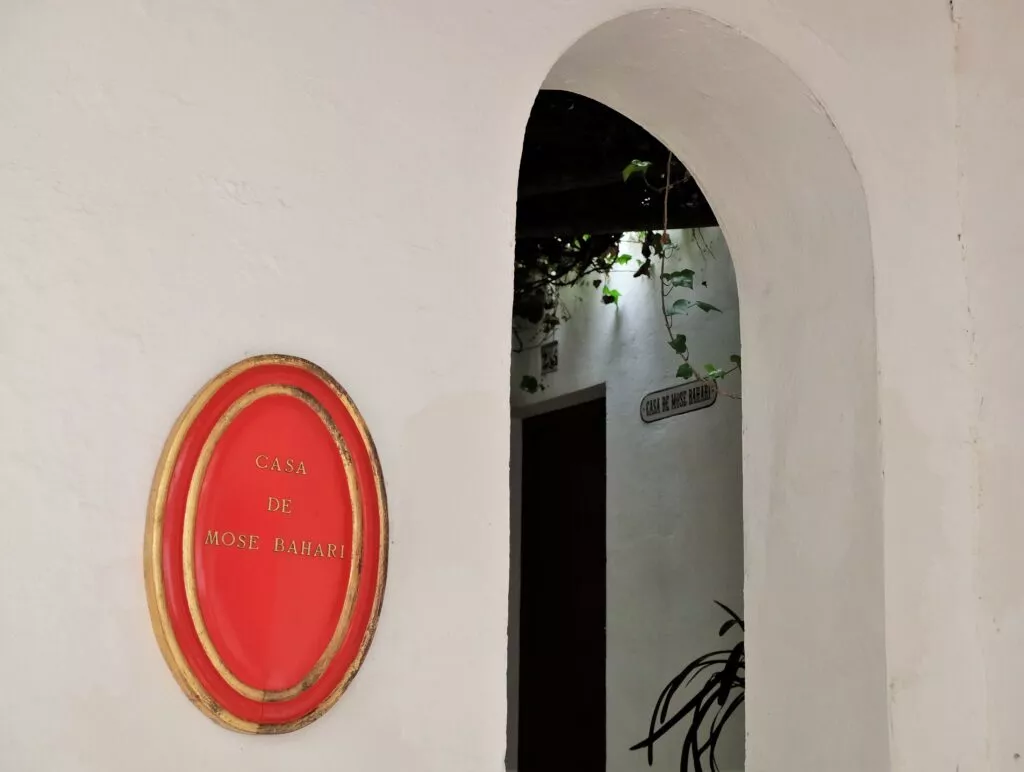
Here’s the link to the Las Casas de la Juderia hotel, to see the photos and/or book.
A final suggestion for accommodation: the Torre Sevilla… for those who love heights
This is the only skyscraper – rascacielos – in Seville, standing some 200 metres high!
The Tower was designed by Argentine architect César Pelli. He has already designed such iconic towers as the Petronas Towers in Kuala Lumpur, the World Financial Center in New York and the MOMA Museum Tower in the same city.
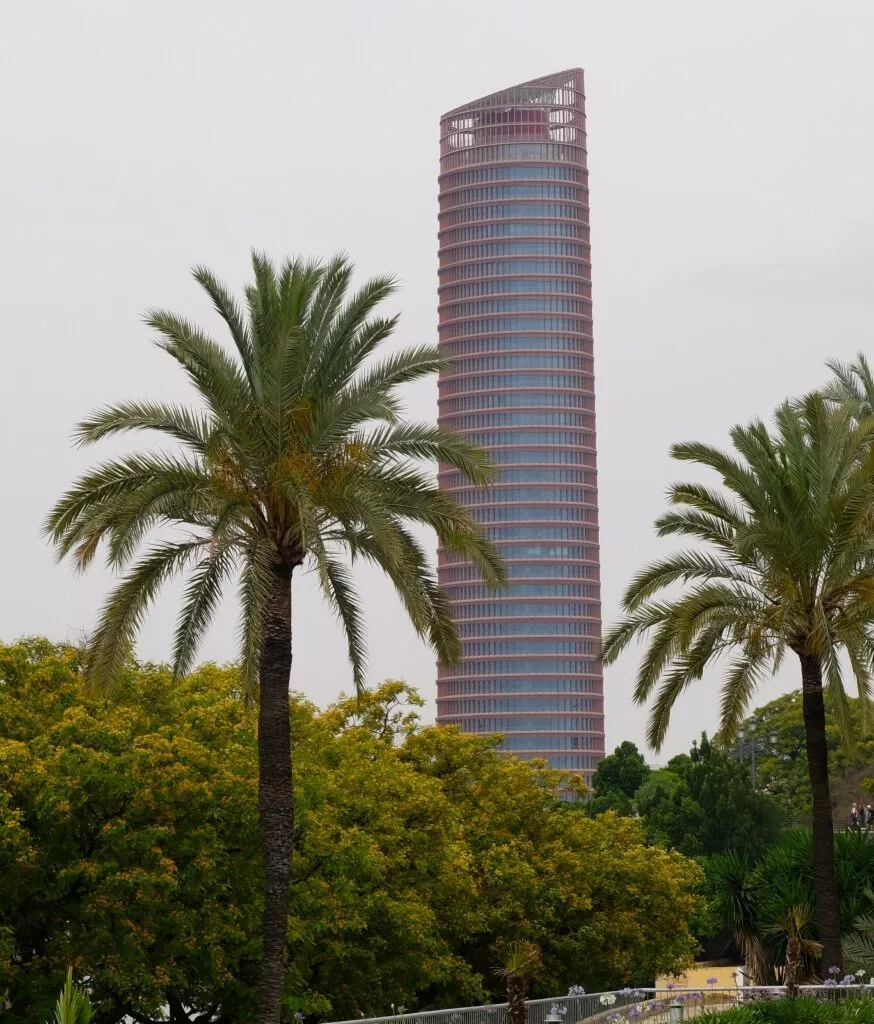
…At the very top, you can enjoy a drink on the highest rooftop in Andalusia… An extraordinary place to enjoy the sunset over Seville.
And for those who want to stay overnight at this altitude, here’s the link to the 5-star hotel: Eurostars Torre Sevilla.
A little background information: when the skyscraper was being built, UNESCO intervened to express its concern and the risk of Seville’s historic centre being classified as an endangered World Heritage Site.
Below is a map of Seville with the hotels currently available (change dates if necessary):
What to do in and around Seville
Note: for those who liked this article – and those who are curious – here’s a page with 8 really great leisure activities to do in Seville.
Book a private tour in Seville with Victor, an English-speaking guide. This official guide offers to visit Seville through a variety of themes. Victor is an incredible guide. A good part of this page is made up of things I discovered with him.
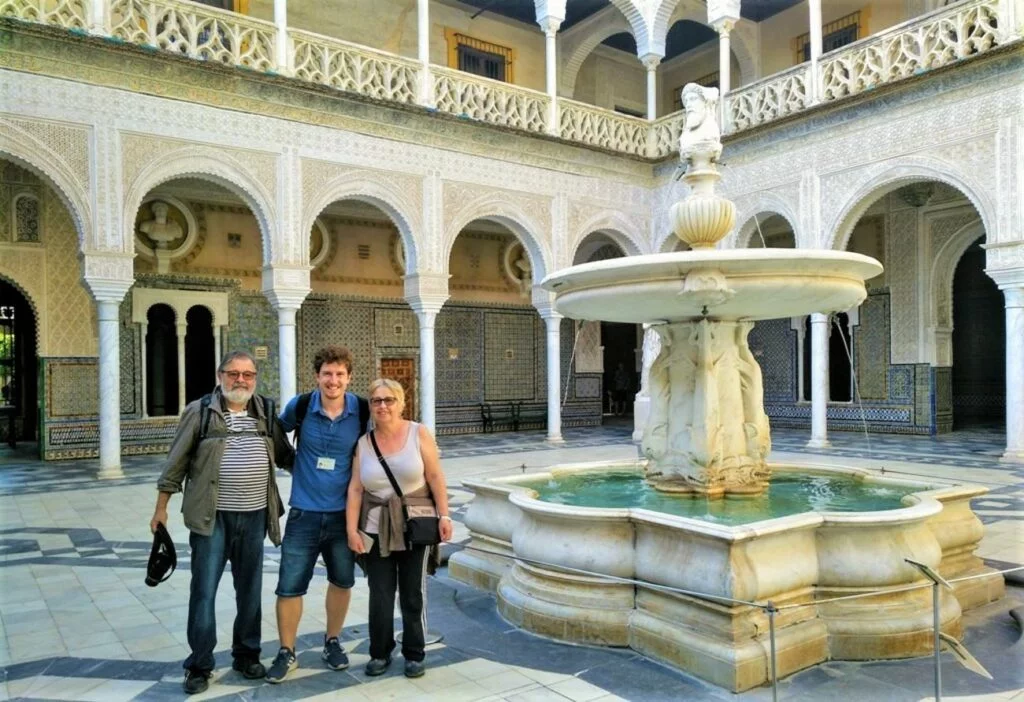
If you are in the western part of the Costa del Sol and would like an excursion to Seville, you can use the following link to book a day trip from Malaga, Torremolinos, Mijas or Benalmadena.
Below you will find a number of ideas for activities and visits, classified by theme. You can book them online today.
The +: the activities can all be cancelled up to 24 hours before the scheduled date
Some useful links (car hire, ideas for visits)
Easy and economical bookings
If you are in Andalucia as part of a tour with several major cities to visit, here are some links that may be of interest:
Cadiz
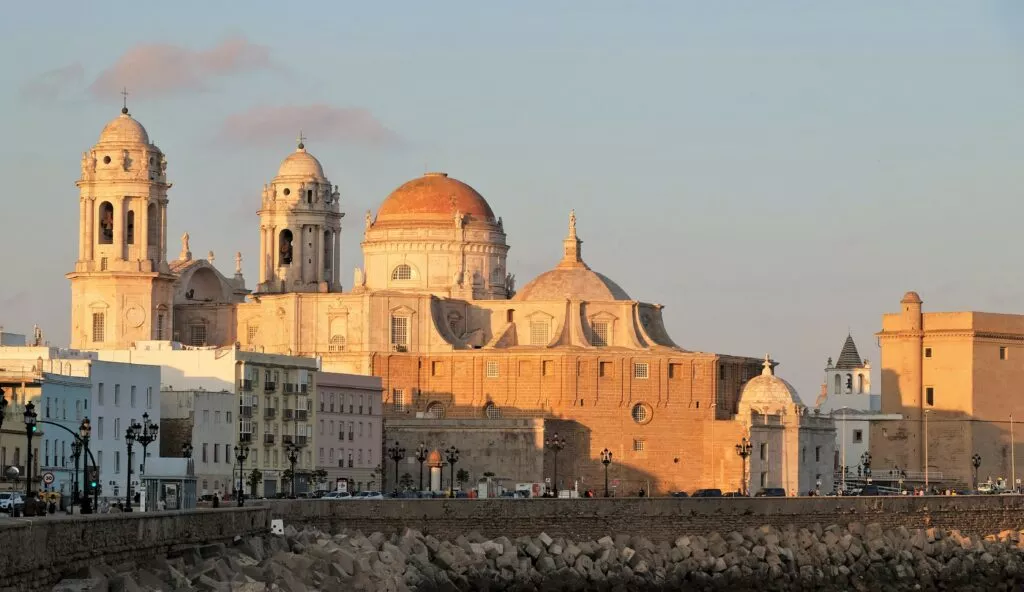
Visit Cadiz, a city with an incredible past and great beauty, on the Costa del la Luz.
Malaga
When you reach the Costa del Sol you will find in this link all must-sees in Malaga :
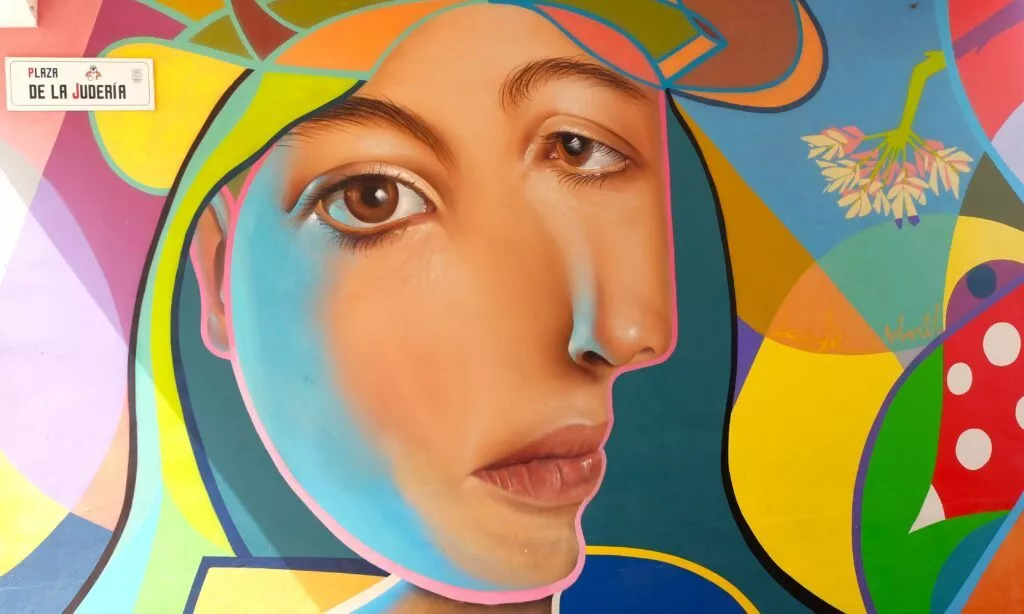
In case you have a little time, I invite you to also discover the curiosities and unknown places of Malaga.
Granada
Discover what to see in Granada, and visit the Albaicin and Sacromonte districts:
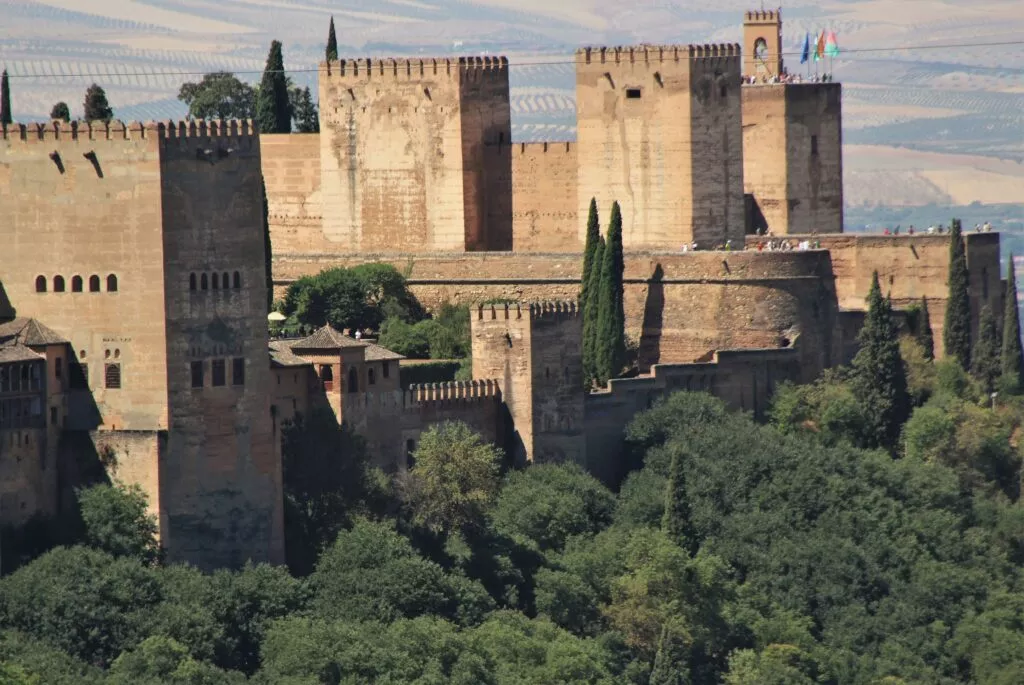
Cordoba
And of course, visit Cordoba, the caliphate city, and the Juderia district
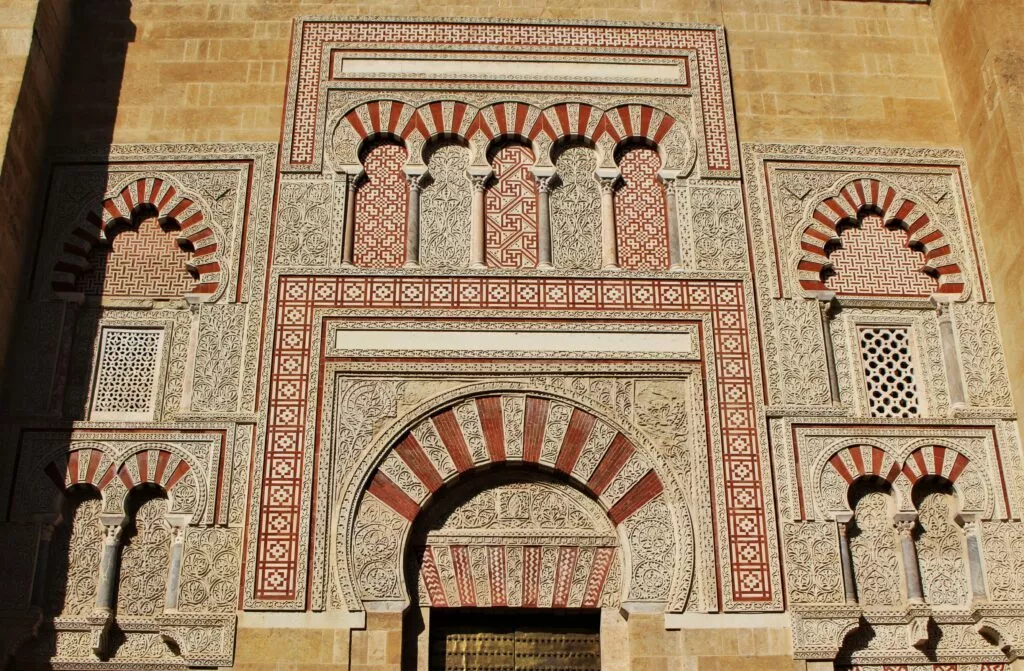
Discover more of Andalusia’s beautiful sites in the Andalucia blog pages.
Here is the link to receive our andaluciamia.com blog newsletter
The latest articles on Andalucia
-
Interactive map of Andalucia with best places to see
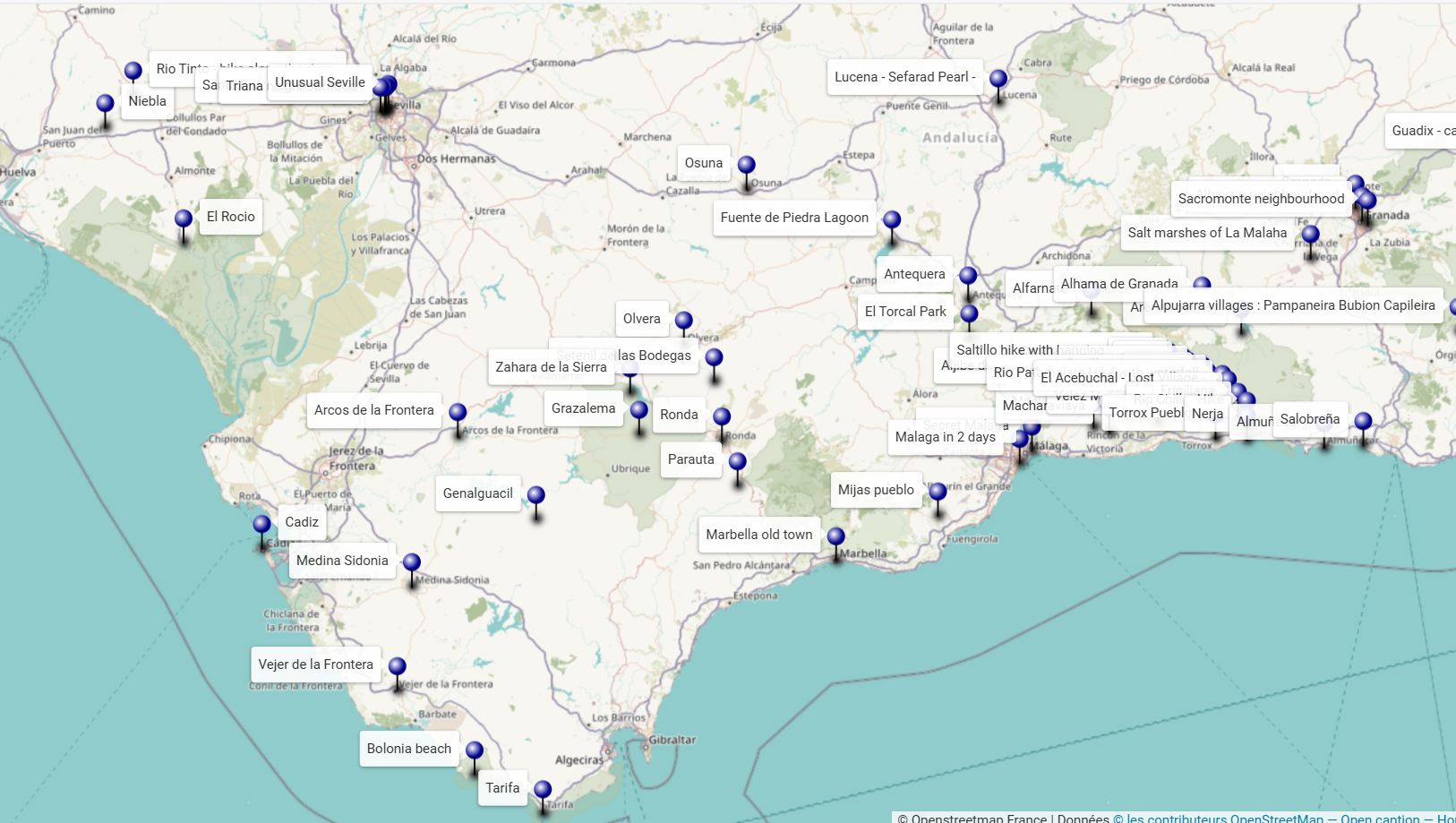
An interactive map of Andalucia to discover the sites to see around your holiday destination or to prepare a tour or road-trip.
-
Top 15 Must-See Attractions in Ubeda, Spain
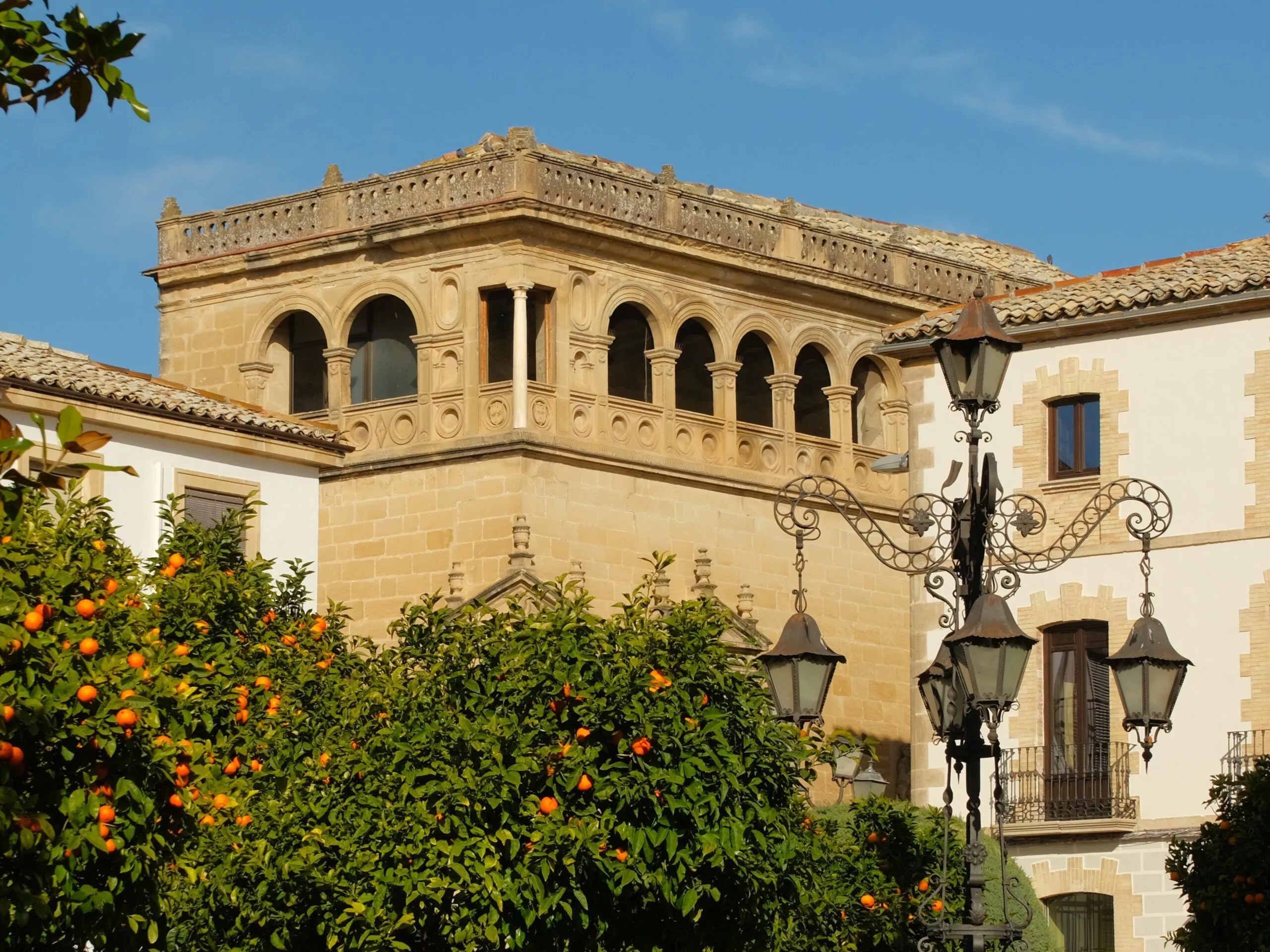
Here are the best places to visit and what to see in Ubeda. This Renaissance-style capital city of Andalusia is a marvel.
-
Visit Olula del Rio, the Mujer de Almanzora and the museum
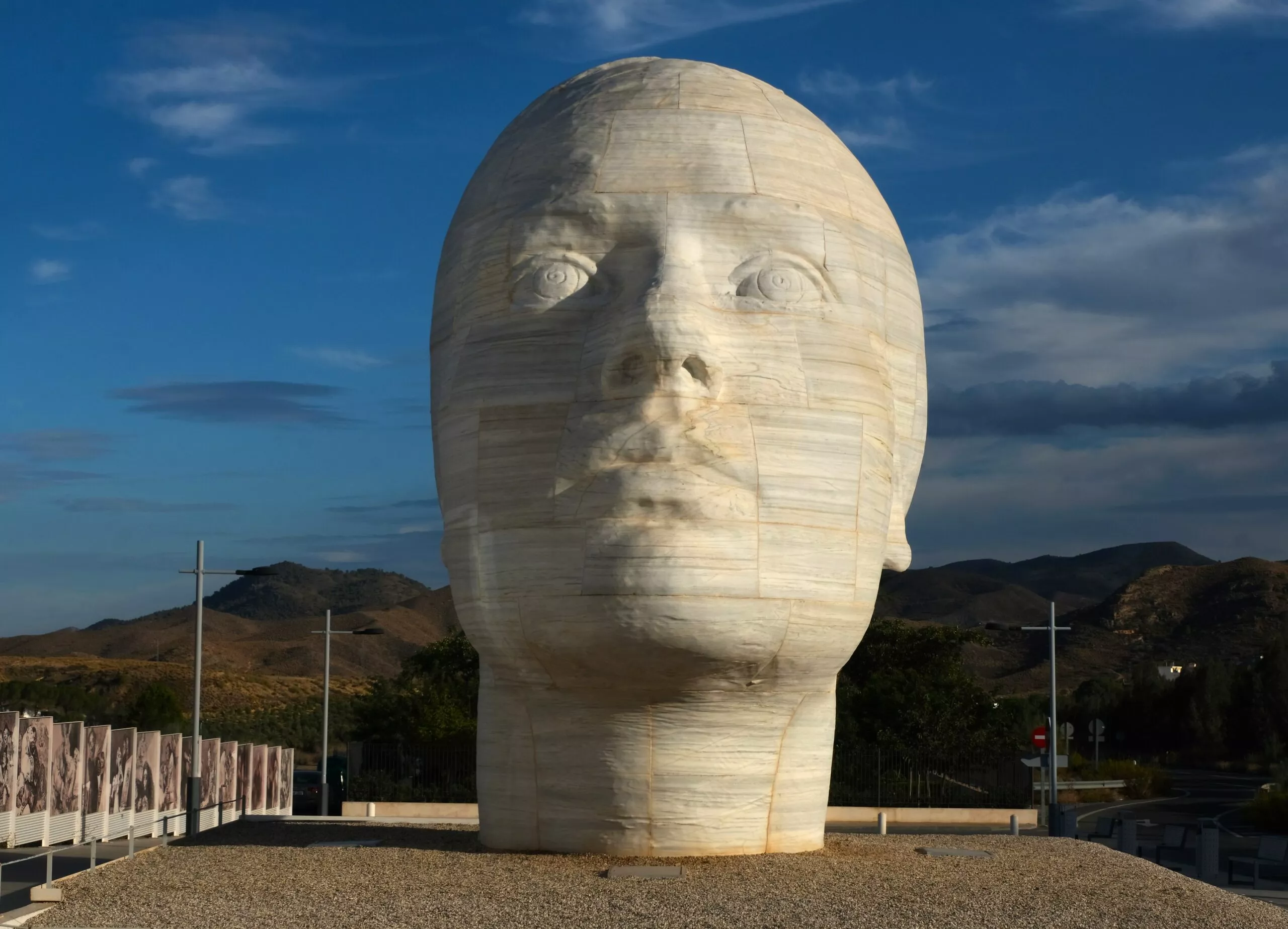
Olula del Rio see its 3 wonders: an extraordinary marble sculpture, a surprising museum and an incredible photography centre.
-
Fiesta del Queso in Zuheros Cordoba
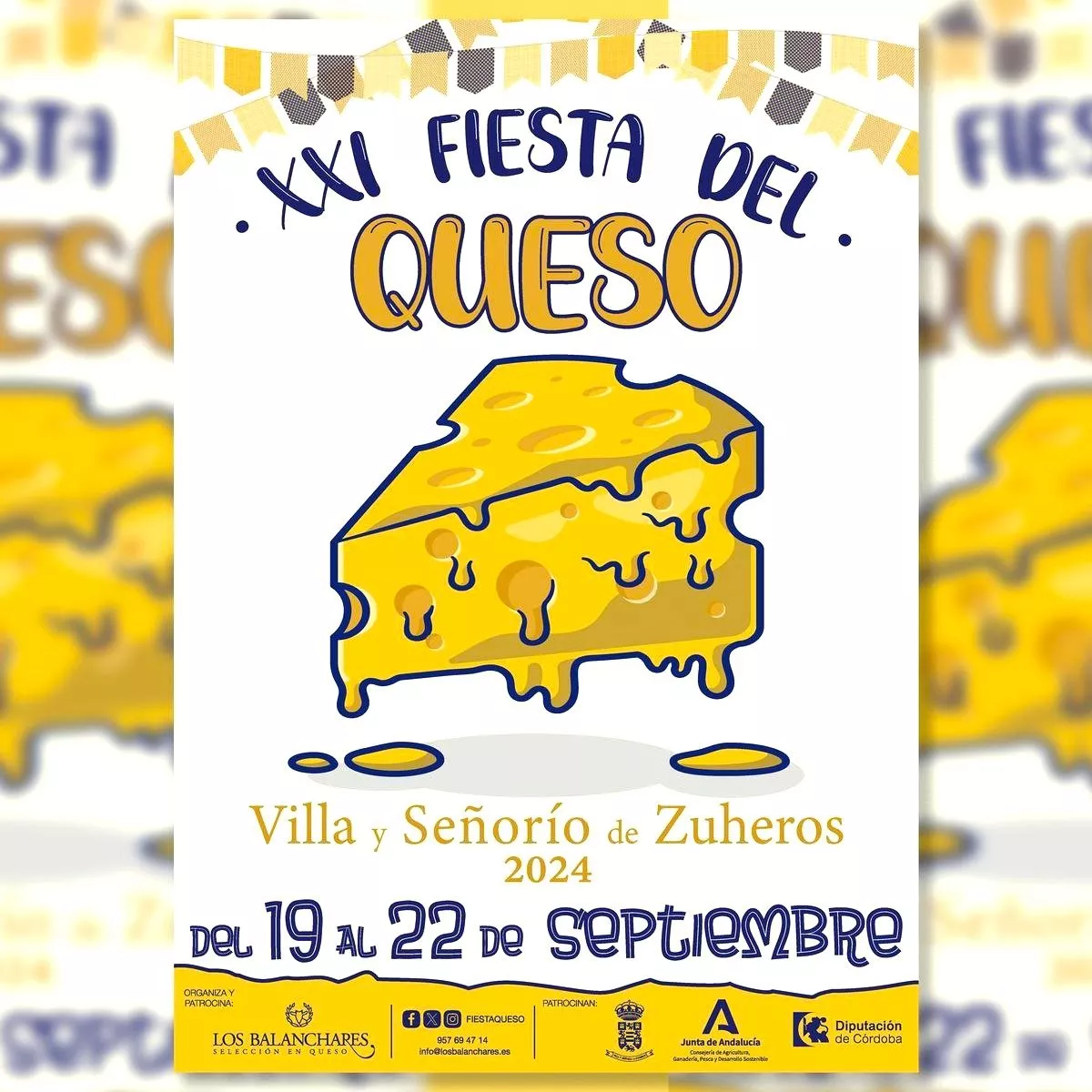
Discover the incredible Cheese Festival – Fiesta del Queso in Zuheros, one of the most beautiful white villages in Spain.
